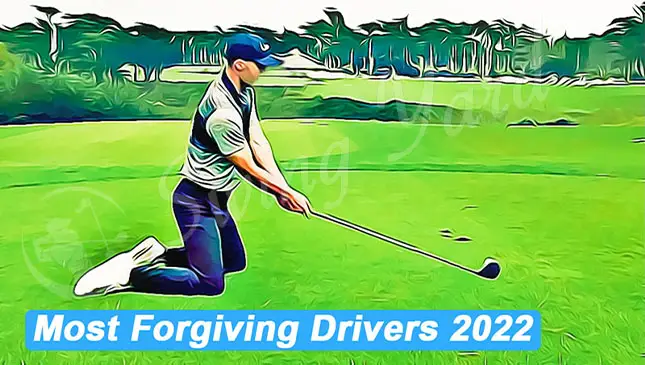
By Coach Erik Schjolberg – Jan 15, 2024
Contents
Key Takeaways – Most Forgiving Golf Driver of 2024
- The most forgiving drivers maintain performance on off center hits
- Low spin drivers do not help side spin (slice/hook)
- Adjustable weights and hosels help the club work for your swing
- Higher loft will be more forgiving off the tee
- Forgiving driver can help with a slice but not as much as a draw bias driver
Get off your knees and stop begging for forgiveness!
After countless hours of research and hundreds (more like thousands) of balls hit, we’ve put together a list of THE most forgiving drivers for golfers of all styles and abilities. Some of our choices may surprise you!
#1. Callaway Paradym X
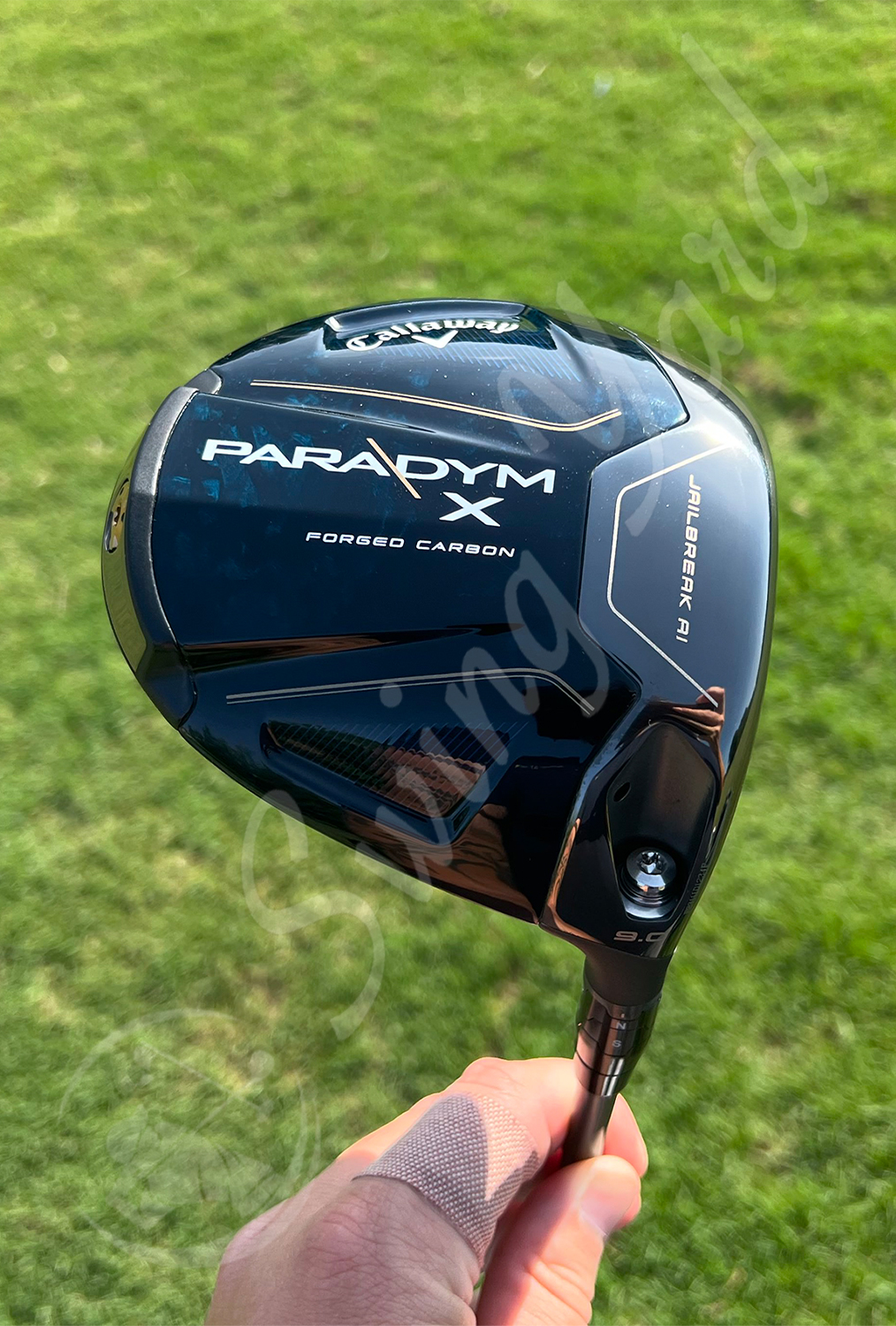

Loft Options: 9°, 10.5°, and 12°
Launch: High
Spin: Mid
Adjustable Hosel: Yes
Pros:
- Enjoyable sound and feel
- Highly consistent across the face
- Navy and gold design gives premium feel
- Launch and draw bias help in/out swing path
Cons:
- No adjustable weights
- Headcover looks cheap and a little silly
My Experience (with pictures):
The first thing I noticed after opening the box was the new look. Super dark blue. Almost black. I really like the look at address with that color. Just changing things up a bit made it enjoyable. The bottom is really amazing. This swirling black and navy. Almost camo pattern but not quite.
- The consistency across the face is truly impressive. Forgiveness like I have never seen before. Off center strikes were very minimally penalized. I was finding the fairway with connections on the high toe!
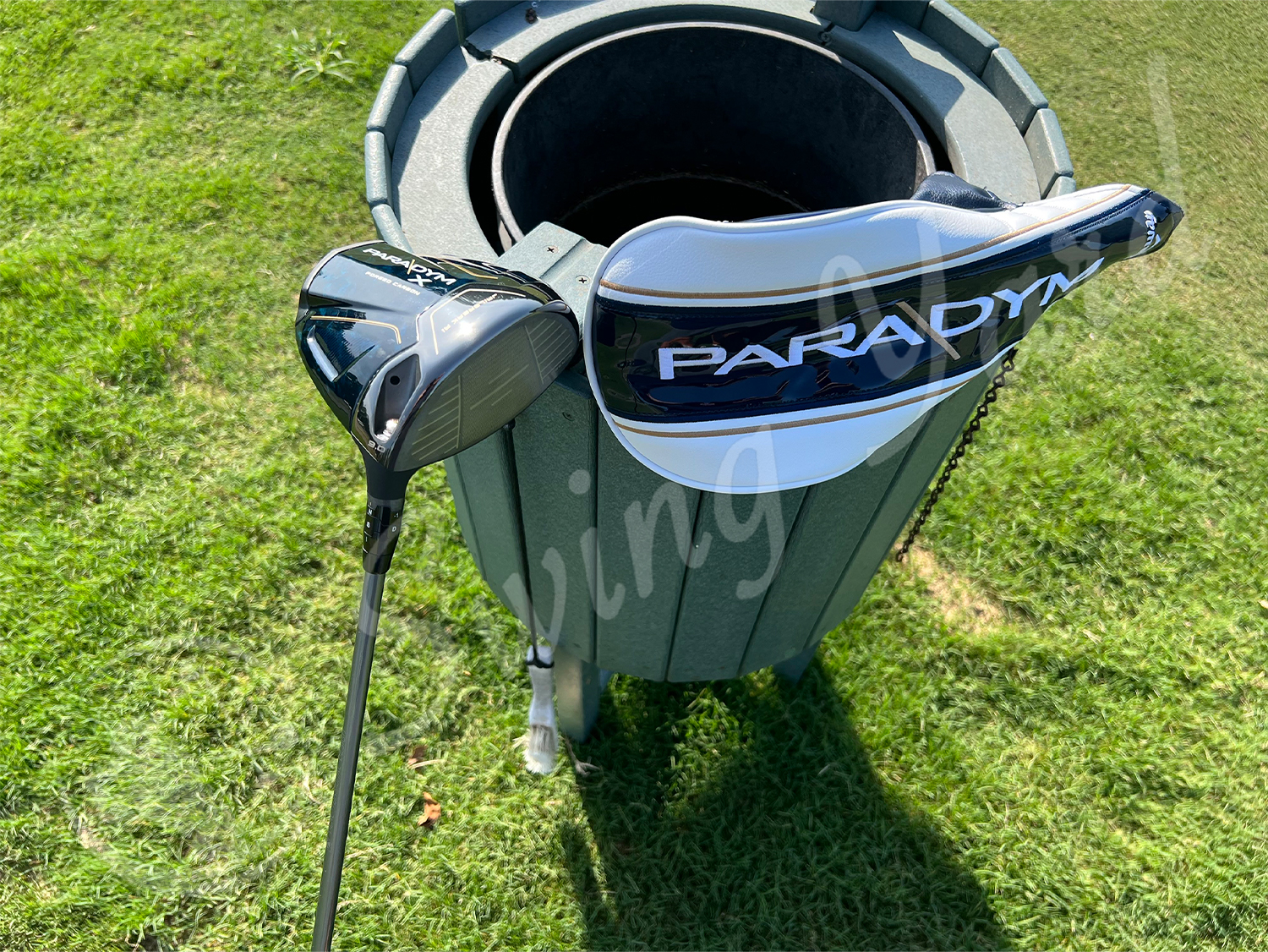

- With the Paradym X in my bag, I posted some of the best scores in my golfing life. The Callaway Paradym X is certainly at the top spot of drivers that fit my swing and playing style. I could definitely see it taking a permanent spot in my bag.


The face was noticeably different too. Reminds me of the Titleist face design. I definitely like the look of it better than my trusty Epic Max. Its more modern and angular lines make for a sleek look. Overall, very impressed with the new look.
I really fell in love with the sound and feel of the Paradym X. It is a much more muted and solid sound at impact compared the the higher pitched and hollow sound of the Epic Max.
WHY This Is The Most Forgiving
- Most consistent across the face
- 2nd longest of the forgiving options
- Hard to miss the fairway
The Bottom Line
The Callaway Paradym X was one I was really interested in comparing my gamer to, and I was really impressed with its performance. The look is something different, and the sound at impact is one of the most enjoyable parts of this club. You won’t find much loss of distance and accuracy if you find the toe or heel on contact, and that is great for many of us out there hacking away every weekend.
#2. PING G430 Max
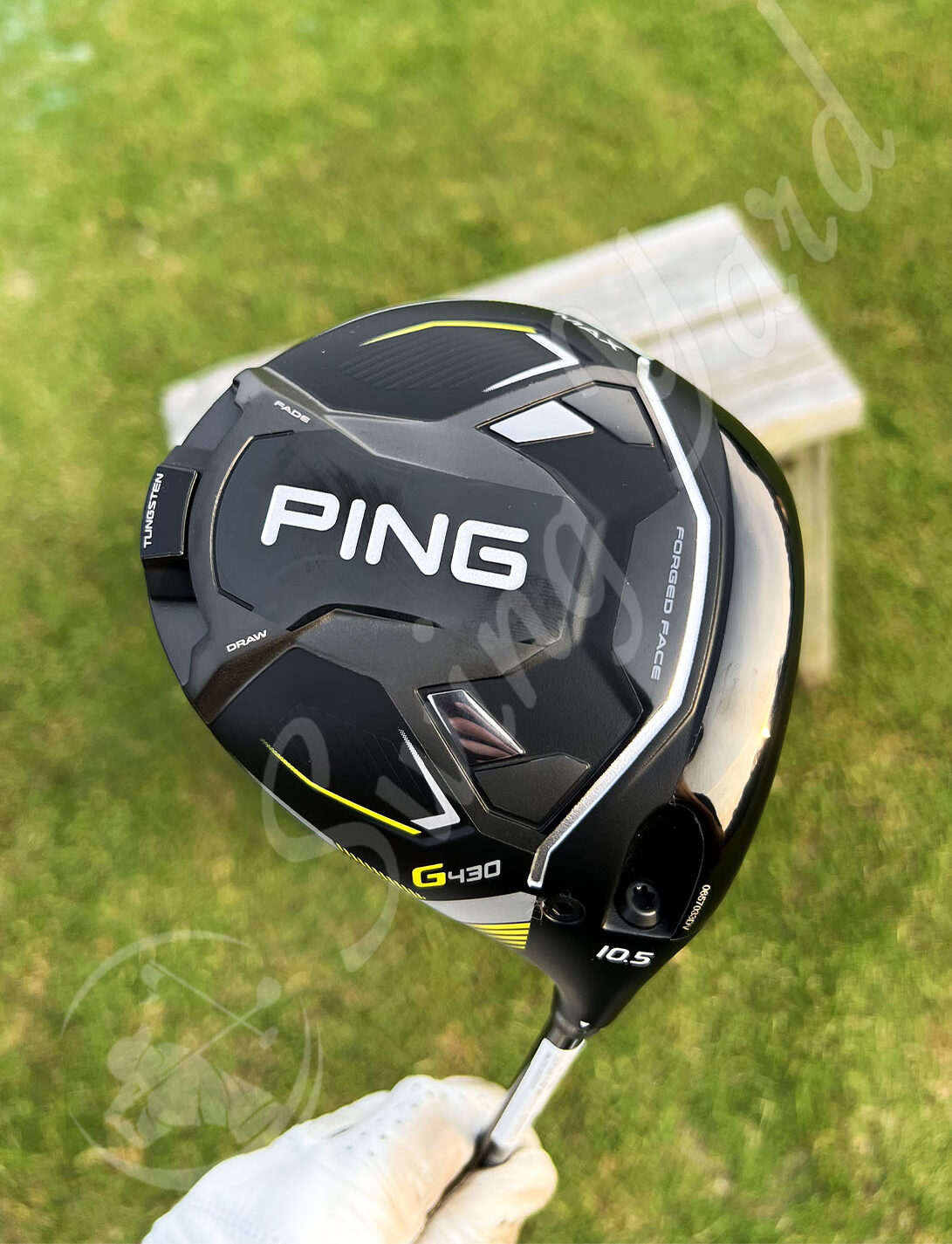

Loft Options: 9°, 10.5°, and 12°
Launch: High
Spin: Mid
Adjustable Hosel: Yes
Pros:
- Superb distance
- Forgiveness is off the charts
- Adjustability for tuned trajectory
- Looks great at address
Cons:
- Most shots ended up left of center
- Hard to distinguish mishits from pure ones through sound and feel
My Experience (with pictures):
The PING G430 Max didn’t disappoint once I got out to the range. I was seeing drive totals 15-20 yards farther than my gamer! Part of it was carry distance, but the roll out was impressive too. That would be the handiwork of the new face design and what Ping calls “Spinsistency.”
- This is a close second, maybe even a tie, to the Paradym X for forgiveness. The performance on Mishits is nuts! Hardly any drop off in distance or dispersion.


- I witnessed a much faster clubhead speed as well as more ball speed off the face compared to my current gamer.
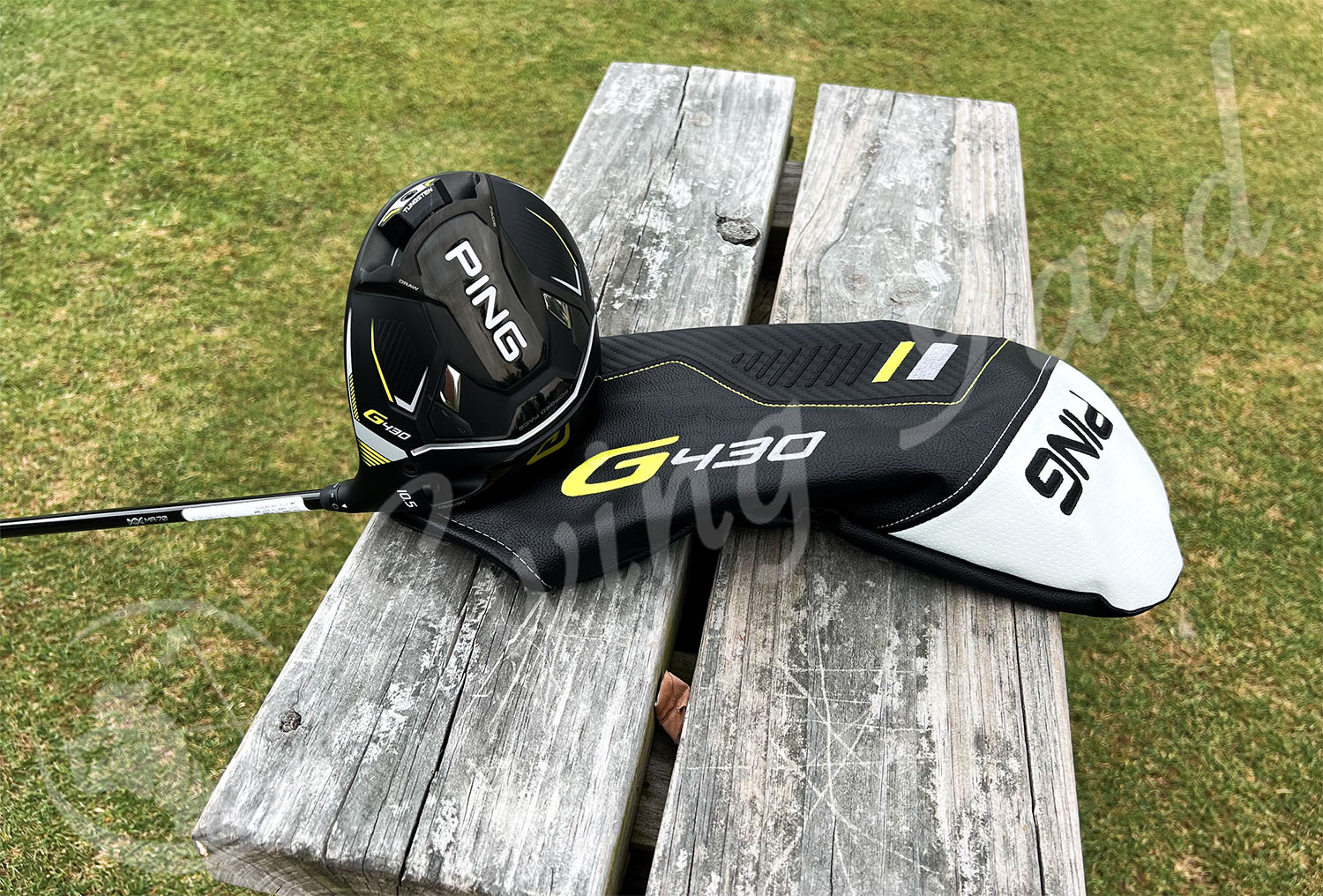

One thing that really stood out was the left/draw bias. My general miss is right, and those were few and far between… much less than my gamer. However, all of my good strikes were finding their way left of center. Slight adjustments to my setup made for an easy fix though.
The G430 Max Driver comes with an adjustable hosel and movable rear weight. I tuned the 10.5° loft on driver down to 9° for a more penetrating ball flight, but I felt no need to move the rear weight, but it’s there to move if needed.
WHY This Is The Runner Up
- Great forgiveness (especially off the toe)
- Consistent spin numbers across the face
- Built in draw bias
The Bottom Line
My Ping G430 Max Driver review proved that Ping really delivered this time around. I was surprised and impressed each time I swung this club.
The distance, the forgiveness, the looks. It seems to be the total package, and I would recommend it to pretty much any golfer.
#3. TaylorMade Stealth 2
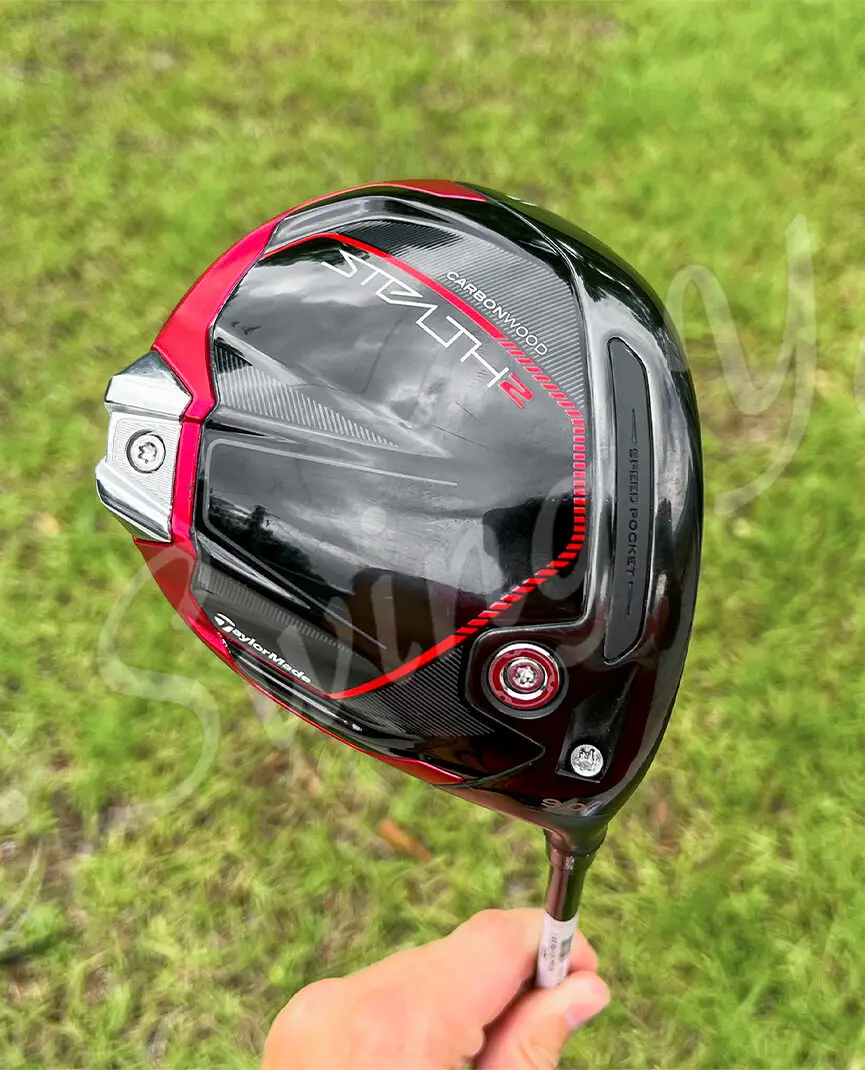

Loft Options: 9°, 10.5°, and 12°
Launch: High
Spin: Mid
Adjustable Hosel: Yes
Pros:
- As long as any club tested prior
- Much more forgiving than the previous Stealth
- Heel to toe, crown to sole, head cover to grip, a total masterpiece
- A springy like feel that makes you feel like you’re hitting bombs every time
Cons:
- No adjustable weight
- Misses were bad misses
My Experience (with pictures):
“More carbon, more fargiveness” is the slogan with the second chapter of the Carbonwood era at TaylorMade. Compared to the original Stealth, the Stealth 2 has increased speed (distance) and MOI (forgiveness). This is achieved with more of that strong and light carbon fiber.
- The Stealth 2 hits BOMBS. One round I played was on my home course, ole faithful, and holes I was used to hitting 6-7 iron into the green with, I was using 7- 8 and even 9 iron.
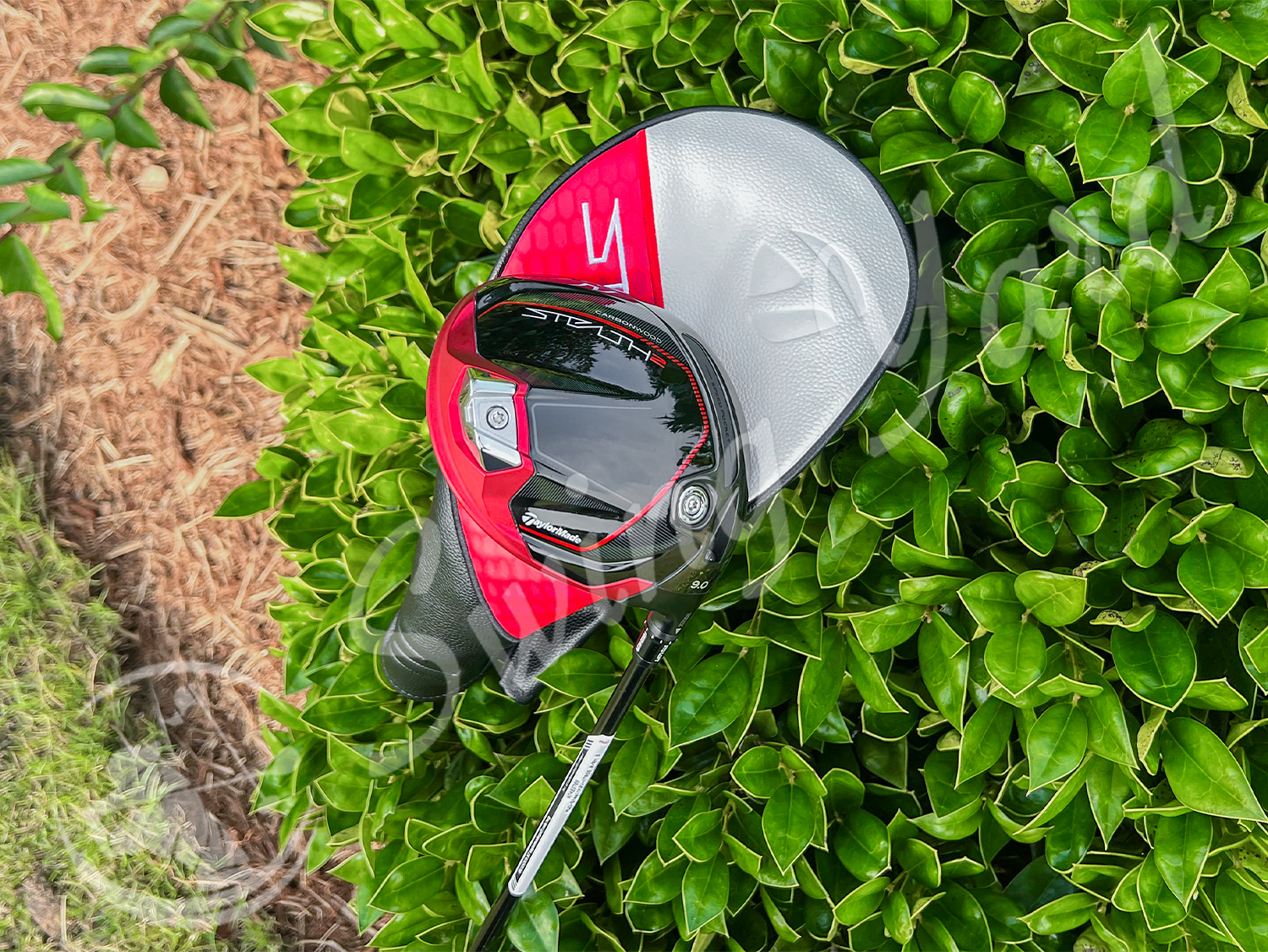

- My misses were bad, but less than usual. Given my inconsistency finding the center of the face, several of those good drives would have been penalized with another club.
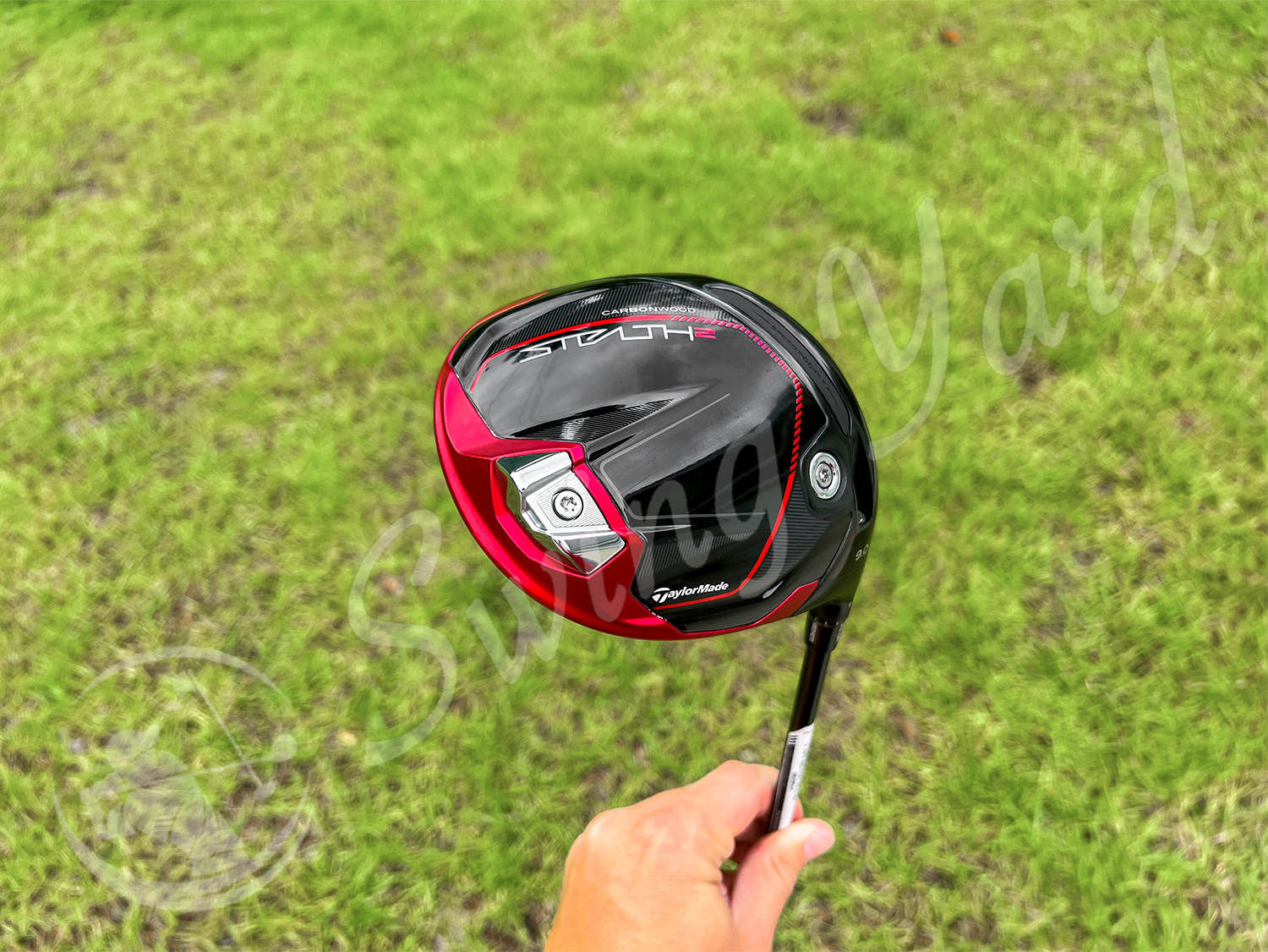

Taking the Stealth 2 out to the range a few times, the slice reared its ugly head. The first several strikes were found going wide right. I knew an adjustment in my swing path was needed to keep my drives in the fairway with this beast. I found the right combination, and with the two rounds I played with the Stealth 2 I hit 83.3% and 69.2% of the fairways. Pretty incredible.
WHY This Is A Forgiving Driver
- Super long off the tee
- 60x Carbon Twist Face provides consistent distance across the face
- Buttery smooth sound and feel
The Bottom Line
The Stealth 2 is an amazing club. I was hyper impressed with the performance of the Stealth 2, and even more so with the design. I am hard pressed to say anything bad about this driver.
There wasn’t any crazy distance gains compared to my gamer, but the slogan FARgiveness really has some truth to it. It was hard to tell a mishit from one on the screws other than a slight change in feel at impact. It really helps keep momentum of a good round that would normally be thwarted by an off day on the tee. Read my full in-depth review here.
#4. Tour Edge Exotics E723
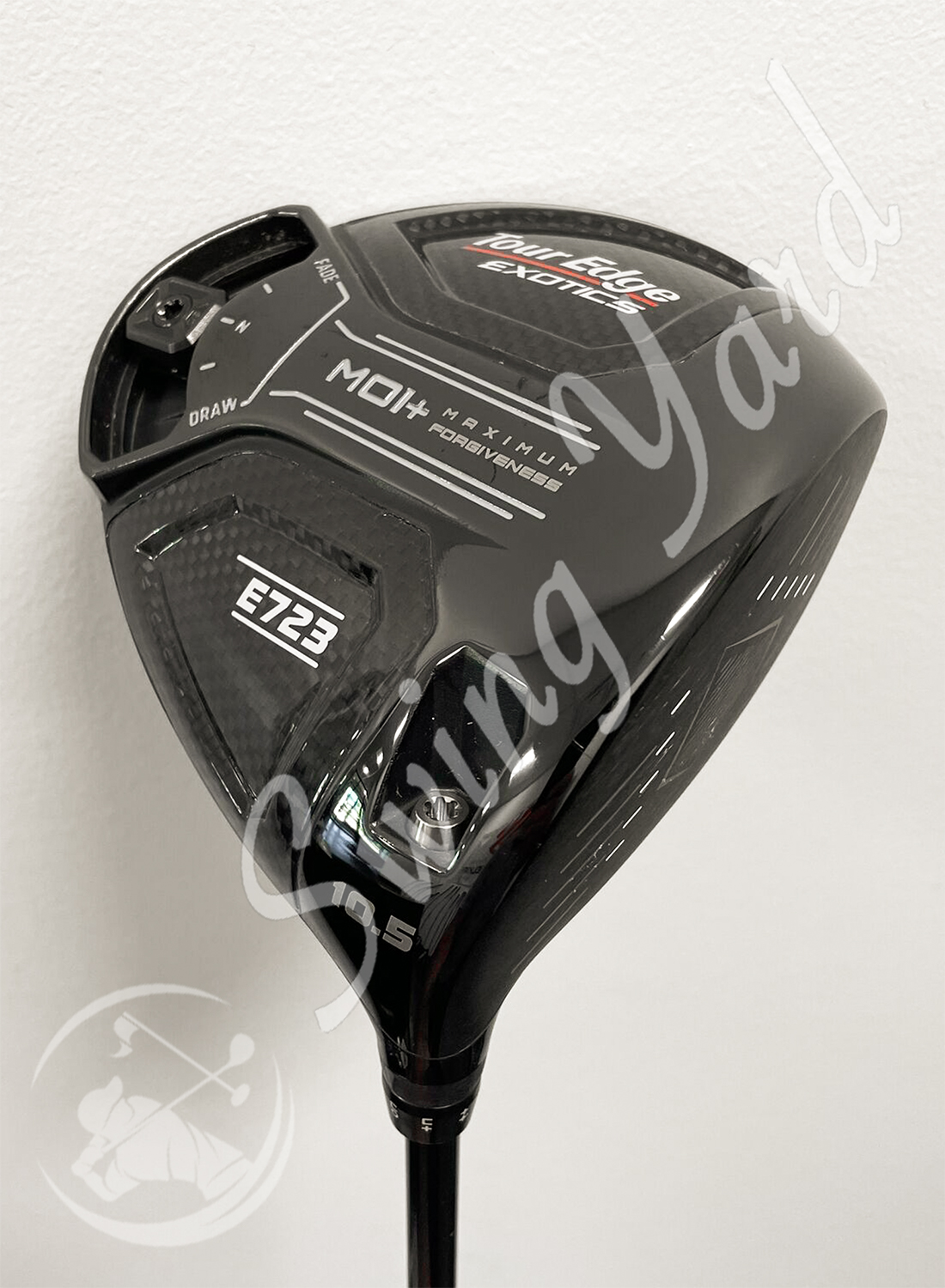

Loft Options: 9°, 10.5°, 12°
Launch: High
Spin: Mid
Adjustable Hosel: Yes
Pros:
- Easy launch
- Adjustable hosel
- Sliding weight system for ball flight control
- 360° Perimeter Weighting boosts MOI significantly
Cons:
- Design is just okay
- Not as long as the others tested
My Experience (with pictures):
Tour Edge Exotics has been making some waves, especially on the Champions Tour, and really finding its little corner of the driver market. The C723 is their forgiving driver option for 2024, and at this price point, it’s pretty impressive!
- I found the C723 to be one of the easiest clubs to get the ball up in the air. Nice high launch that is great for someone who struggles off the tee. The mid to high spin keeps the ball in the air longer and adds some extra yards you may be missing.
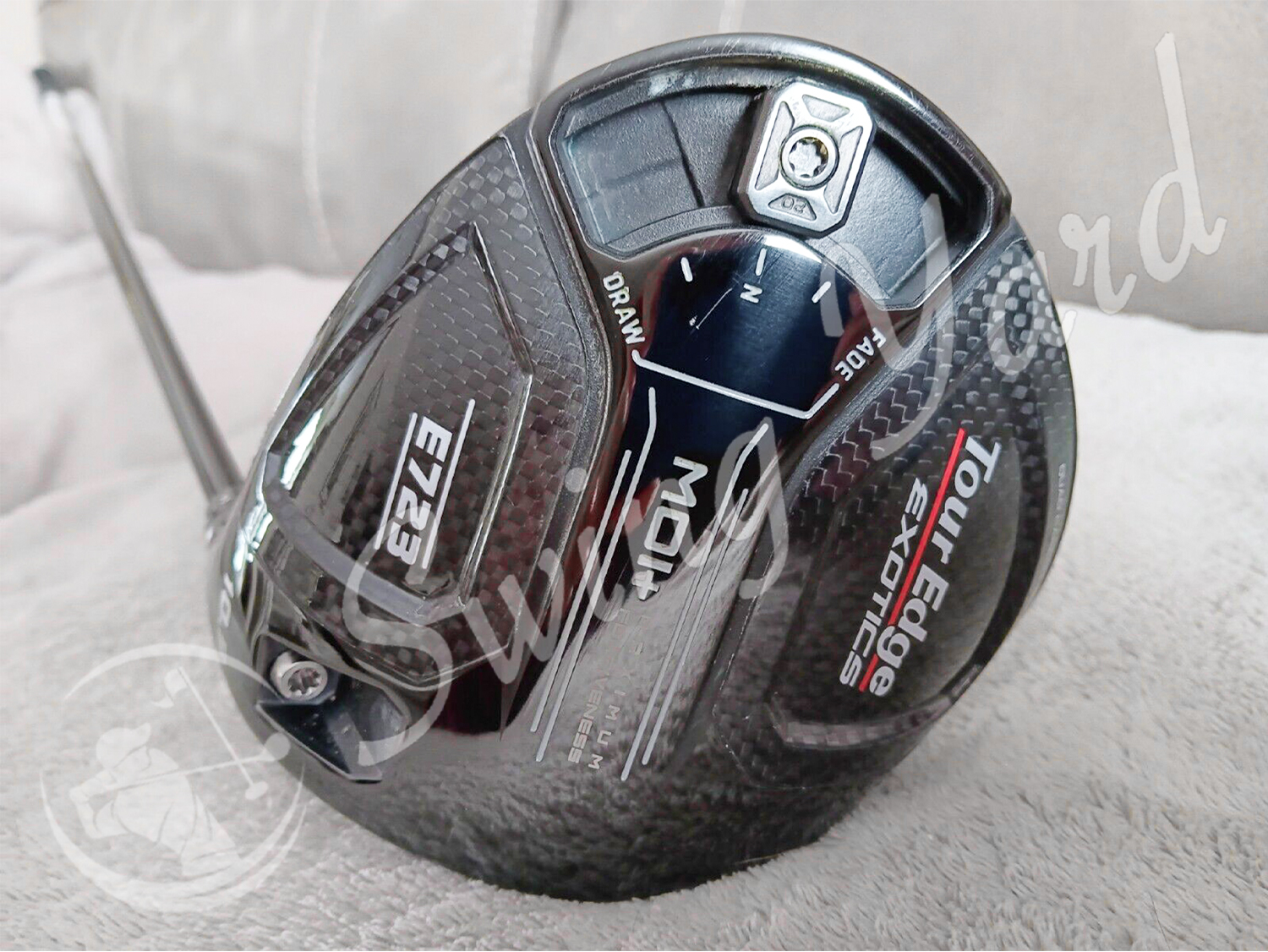

- I had never hit a Tour Edge club before, and I was expecting “cheap,” but it’s far from that. Premium look, and premium sound and feel. It holds its own against the big boys in the driver space.
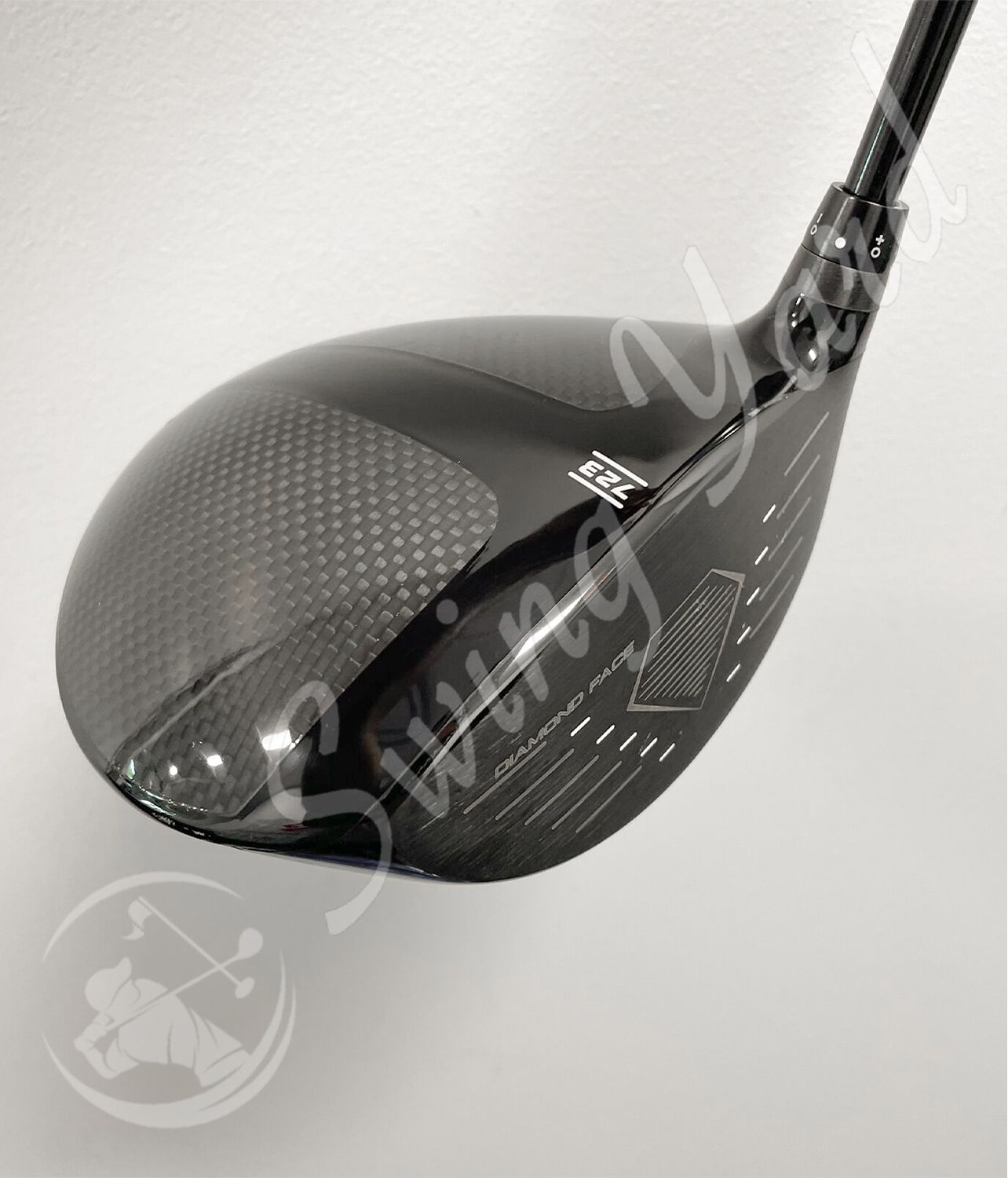

This club is highly adjustable, between the sliding weight, the adjustable hosel, and even the option to even buy new weights. Having so much adjustability really aids in the overall forgiveness of the club. Shifting the CG and adjusting loft and lie all helps with shot shape correction, and helps you find the fairway!
WHY This Is The Best Value
- Cheaper than the likes on Callaway and TaylorMade
- Nice high launch and mid spin to add distance
- Tons of adjustability options
The Bottom Line
If you’re looking to have some shot shape, adjustability that will grow with your game, and not break the bank, the Tour Edge C723 is the best option out there. Decent forgiveness and distance that most golfers will be happy with, and you’re getting it at a lower price!
#5. Srixon ZX5 MK II
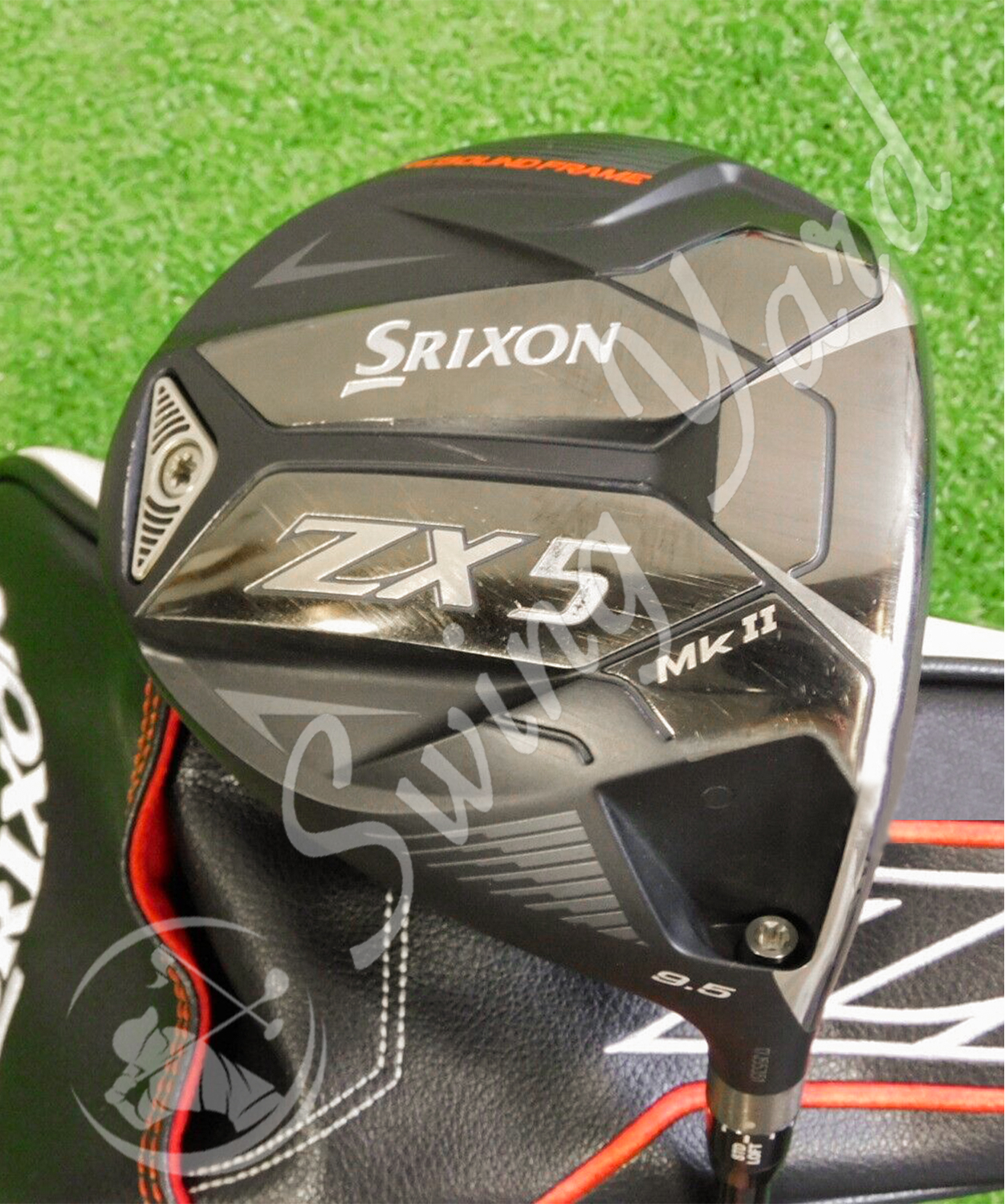

Loft Options: 9° and 10.5°
Launch: High
Spin: Mid
Adjustable Hosel: Yes
Pros:
- Killer distance
- Slight draw bias
- Sleek new design and head cover
- Surprisingly forgiving off the toe and heel
Cons:
- Not as high launching as expected
- Adjusting hosel rotates shaft and grip
My Experience (with pictures):
The ZX5 MKII is the new and improved version of the original ZX5. Srixon is trying to make itself some space in the driver world, and this is their forgiving option. The forgiveness on off center strikes was surprisingly good. I miss off the toe a lot and it stayed straight and long.
- Higher swing speeds get the benefit of the double rebound face that seems to spring the ball down the fairway further than the ZX5.
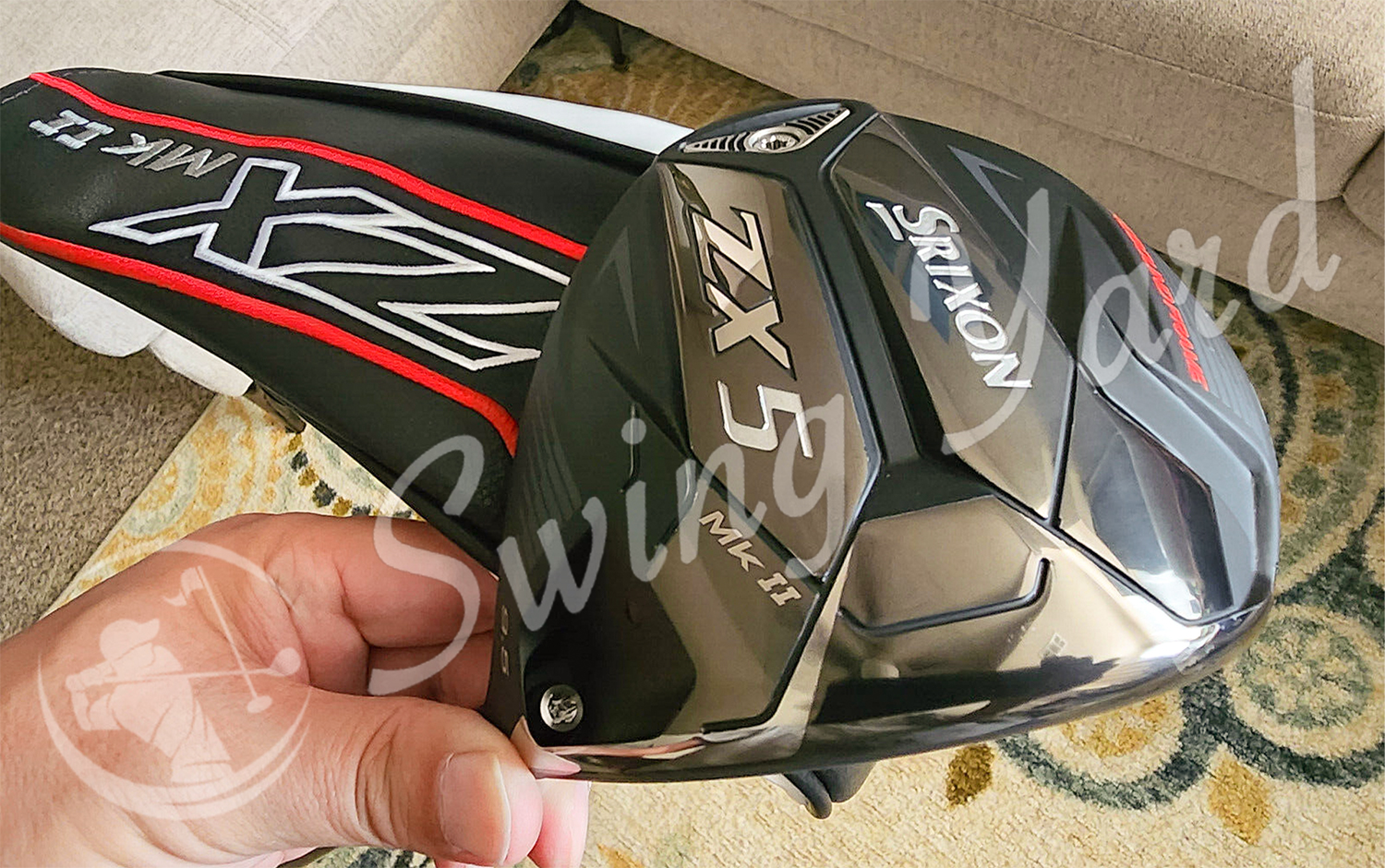

- The club face is not very tall, and seems much wider than other clubs tested. This allows for more lateral misses, which is the most common miss and where forgiveness is at a premium.
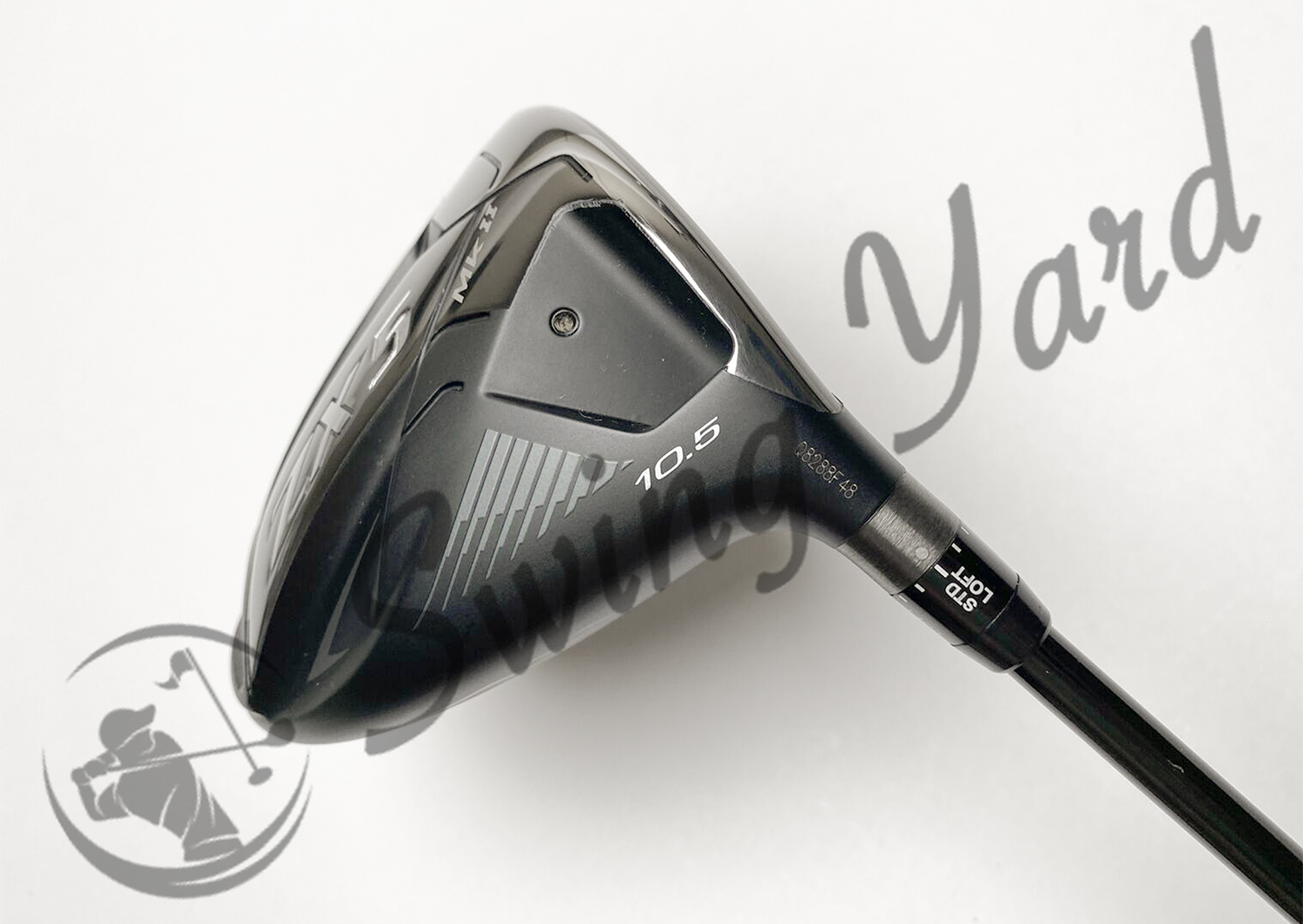

The matte crown is an improved look of the ZX5s original gloss crown, and the alignment aid seems to be off center a bit, which played tricks with my eyes at address, but actually helps those toe misses a bit.
WHY This Is The Best Off Center
- The seemingly wider face allows for more room at the heel and toe
- The heel favored alignment aid naturally makes you want to keep extension through impact
- Top end distance for forgiving drivers
The Bottom Line
Srixon makes some quality stuff, and it’s really a ball strikers brand. However, the ZX5 MKII is a great driver for someone that needs a little help off the tee. If finding the center of the face is an issue, the ZX5 MKII is a great choice for you!
Loser – Titleist TSR2
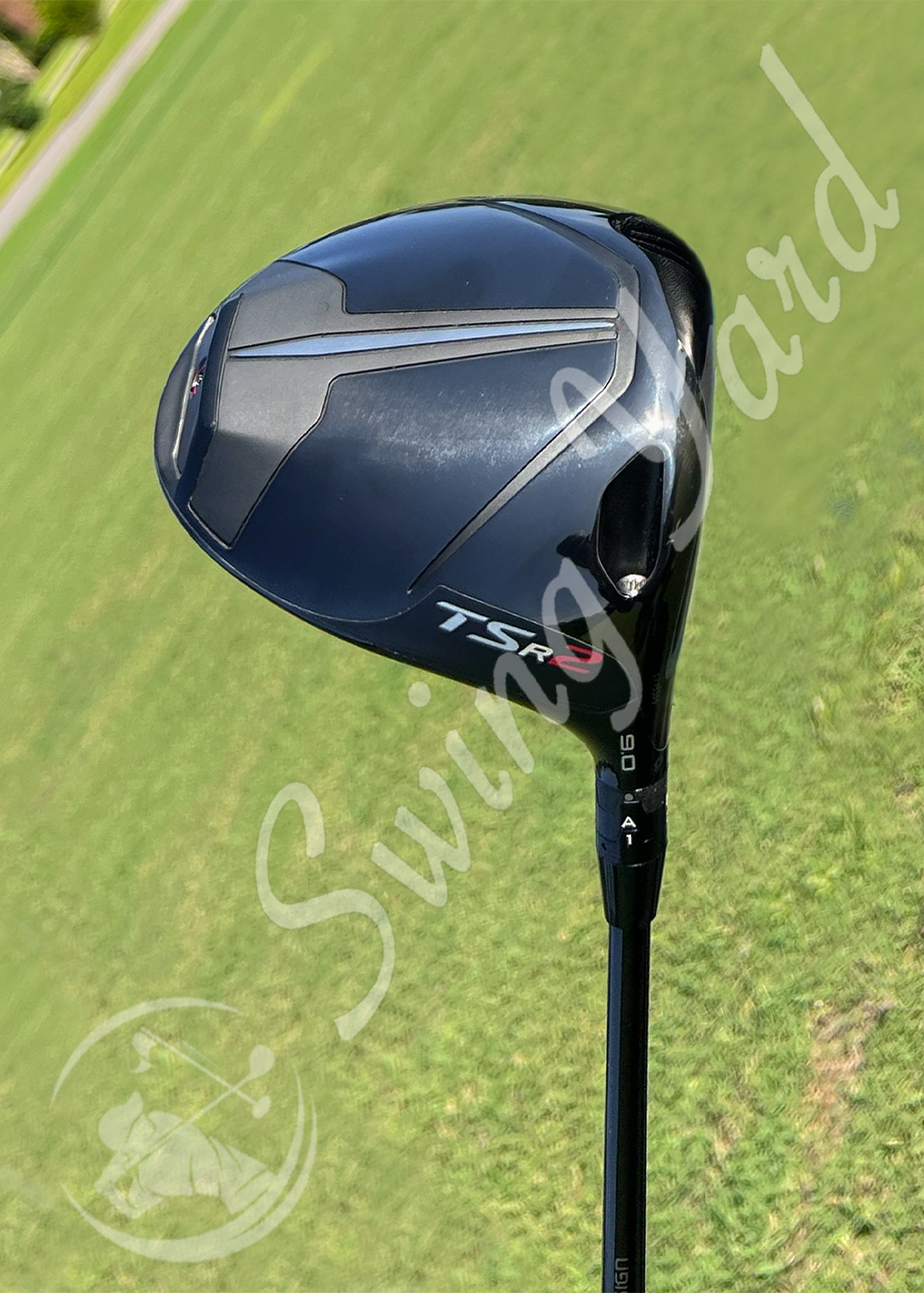

Loft Options: 8°, 9°, 10°, 11°
Launch: High/Mid
Spin: Low
Adjustable Hosel: Yes
Pros:
- Extremely long if you catch it right
- Great muted sound at impact
Cons:
- Not as forgiving as TSi2 or even TS2
- You need a manual for hosel adjustments
- No sliding weight
- Adjustments to hosel rotates the grip and shaft
- Mishits are penalized more than most
My Experience (with pictures):
Personally, I enjoyed testing the TSR2 and especially the TSR3. However, they are not very forgiving. The TSR2 is, for a “forgiving” driver, very long off the tee. Impressive distance off the center of the face. The issue is off center.
- Major concern with distance loss on lateral misses. Toe misses caused a snap hook. A miss on the heel would push right pretty dramatically too.
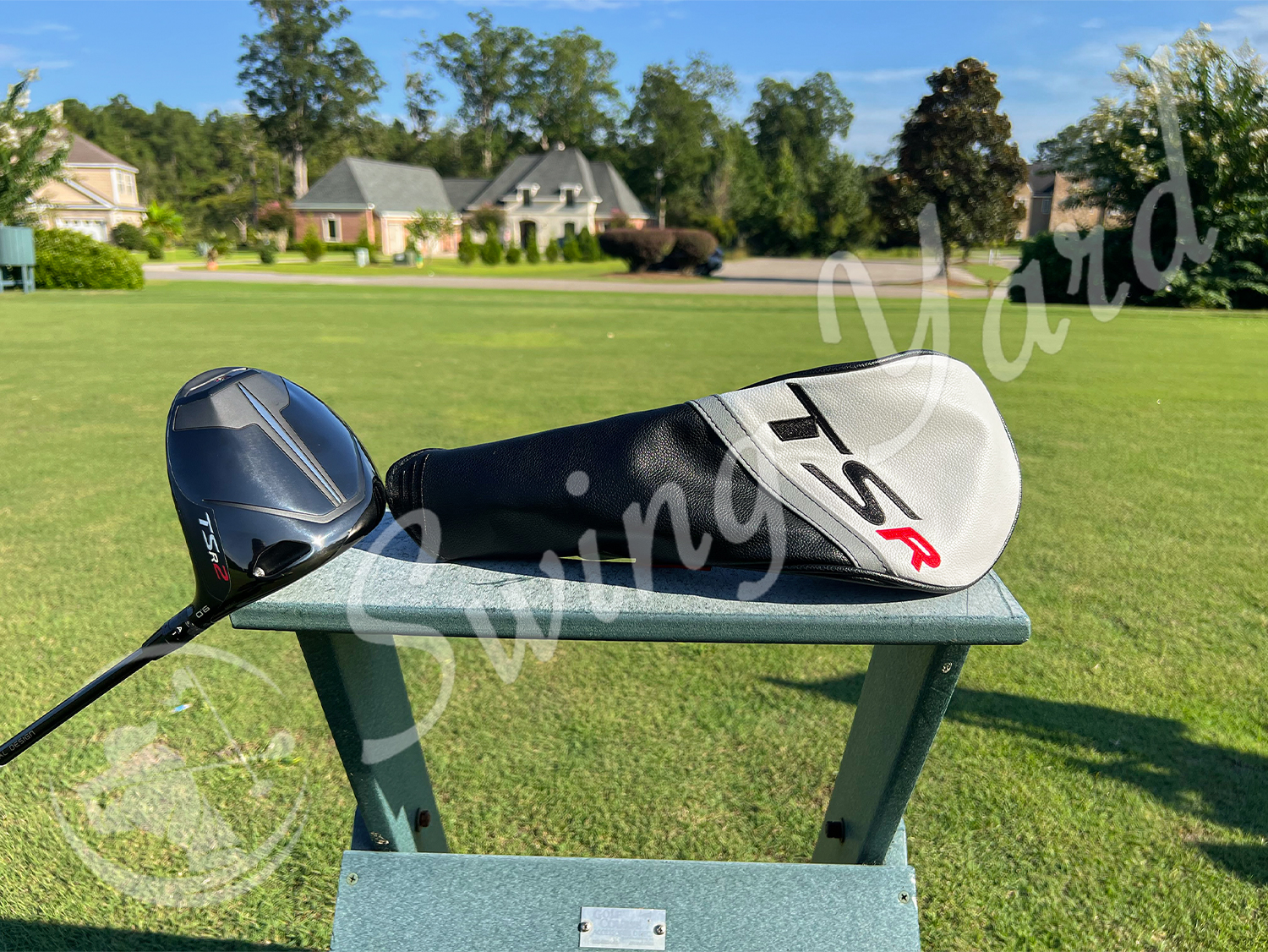

- The launch was a bit lower than you would expect from a “forgiving” driver. I actually prefer that mid style launch, but if you’re looking for forgiveness, you want some easy launch in there.
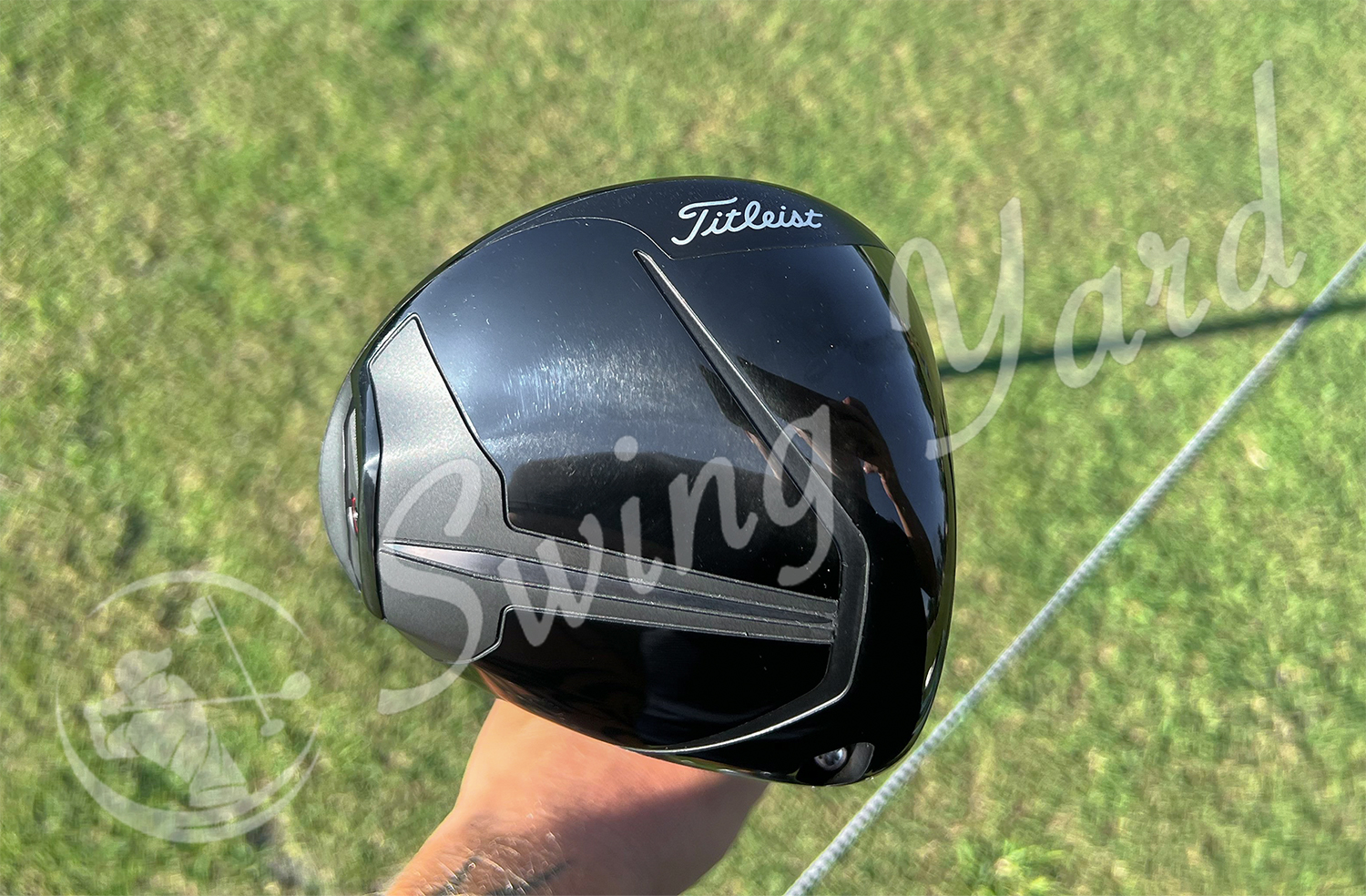

There is certainly some playability in this club, which is great for players looking to shape shots around the course, but the target golfer for a forgiving driver is looking for high and straight.
WHY You Should Avoid This Club
- Center of the face or in the rough (or worse!)
- Mid launch will be a struggle for some
- Too much lateral dispersion for a forgiving club
The Bottom Line
Long story short, the TSR2 is a great club for a certain golfer. If you’re in the market for a forgiving driver, then the TSR2 isn’t your best choice. There are options out there that will give you the same distance with more consistency across the face, and a higher launch of the ball.
What to Consider When Looking for a Driver with Maximum Forgiveness
>> Click here to jump to the reviews <<
Forgiveness
This one should be obvious, but what we mean by “forgiveness” is how well it performs when the golf ball is struck outside of the sweet spot (outside the center of the face). Another way to think about it is, how big is the sweet spot?
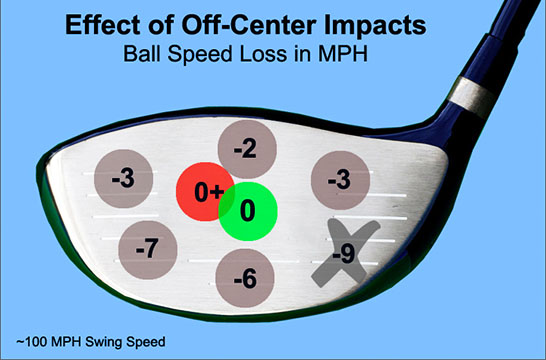

For maximum forgiveness, you’ll want a driver that maintains a relatively straight and a relatively long hit ball on off center hits.
Spin
A lot of newer golfers think that spin is referring to side spin (like a slice), and therefore go for a Low Spin driver. This is completely wrong! Better players are usually the ones who should be hitting Low Spin clubs.
Why? The spin we’re talking about here is what’s creating LIFT in the golf ball. If you have a very fast swing speed, you’re going to get too much spin and lift on the ball… it will go too high, and you won’t maximize your distance.


- Faster swingers (105+ MPH with driver) should opt for Low Spin options
- Slow swing speed golfers should go for the “regular” or non low spin option
Ball Speeds
This is a layman’s measurement of how “hot” a driver is, or a quantifiable number to determine the return of energy from your swing to the ball.
Smash Factor
Ball speed divided by swing speed – it’s really that simple. Although this doesn’t necessarily correlate to distance (and has no bearing on accuracy), it helps quantify how well you’re hitting the ball off the face.
A more forgiving driver will make it easier to achieve a high smash factor.
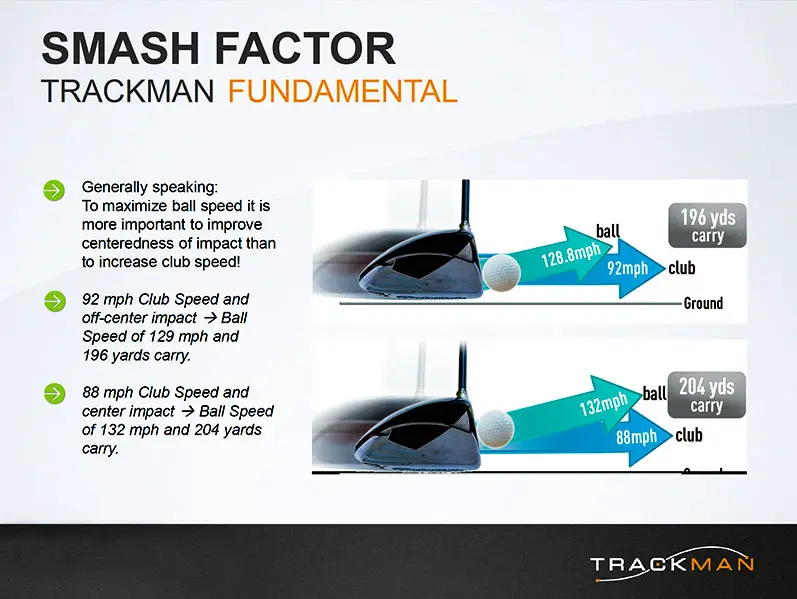

(Courtesy to Trackman for the above graphic)
Adjustability
Sometimes you’re just not feeling it and need a little extra help – sometimes the wind is howling, and you need to rely on roll-out. The ability to adjust a degree up, down, or to “draw” in a pinch can be a big help.
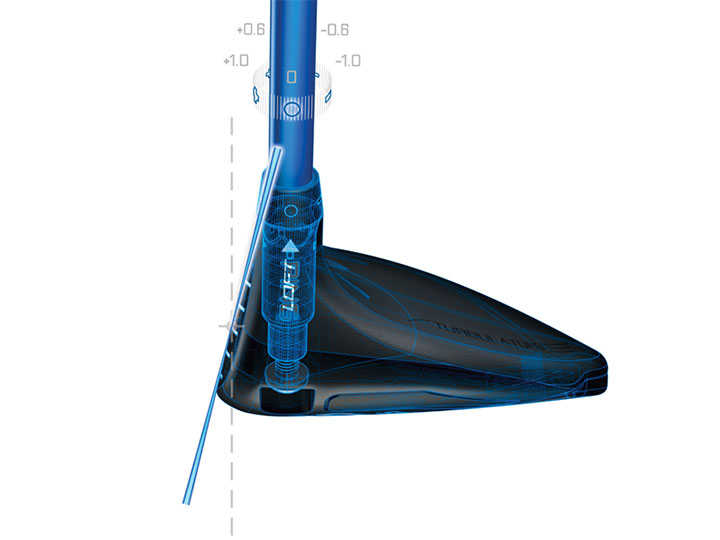

Looks and Feel
This one is purely psychological – but I always say, if you love the look and feel of your clubs, you’ll feel a lot better hitting them. After all, golf is said to be more of a mental game than anything else.
Benefits Of Using Forgiving Drivers
- Ball flight control
- Peace of mind – less wild shots
- Help on mishits – especially important around hazards
- Allows you to swing a bit harder while keeping your confidence up
I can smash a ball 300+ yards and occasionally even carry a ball past 290y. Some of our readers can attest to that from our launch monitor numbers, and people are always impressed when I rip one off the tee – bear with me, this isn’t a humble brag, there’s a point!
Would you believe me if I said some of the best golf I ever played was while recovering from an injury and reviewing a “max” sized head?
Unable to swing at my normal speed, I used the technology in the club to my advantage and drove the ball just over 250y. I hit a WHOPPING 70% of fairways with the outliers less than 10 yards off the fringe. It changed my future equipment choices forever.
Finding the fairway is ESSENTIAL to playing better golf. Those magical 300y drives are akin to a flashy party-trick unless you can reliably find the fairway – something that becomes exceedingly difficult the further you hit the ball.
Landing in the rough, behind a tree, in a pond, or even the highway is a recipe for frustration. Re-teeing at three on a par 4 can easily tank your round or kill your mood for the next few holes.
Forgiveness is not about hitting the ball under perfect conditions, it’s about being human, making mistakes, and still being able to play out the hole comfortably.
FAQ
Note – Some of these FAQs were covered throughout the article, but I still get these questions a lot… so here are the “short and sweet” answers to the most common questions:
What is the most forgiving golf driver on the market?
The most forgiving driver on the market is the Ping G425 Max in our opinion. From our test results, it has the straightest and longest results on mishit shots.
What driver has the biggest sweet spot?
The TaylorMade Stealth Plus is the driver with the biggest sweet spot. The new 60x carbonwood face is 20% larger than its predecessor, allowing for an even larger sweet spot than before.
Is a higher loft driver more forgiving?
Typically a higher loft driver is a bit more forgiving than a lower loft driver. The higher lofted drivers are designed overall for more forgiveness because the type of players that need extra loft also need extra forgiveness.
Check this article out for more info on what loft driver to use.
Are some drivers more forgiving?
Yes, some drivers are more forgiving than others. A driver with a higher Moment of Inertia (MOI) will by design be the most forgiving driver on miss hits. Drivers that are less forgiving offer more control on shot shaping, so it depends what your ability level is and if you need help striking the ball in the center of the club face.
Will a more forgiving driver fix my slice?
A more forgiving driver can help with a slice somewhat, BUT a specific draw bias driver would be a better choice for golfers struggling with a slice.
Not looking for a forgiving driver?
Then check out our list of the best 2023 golf driver reviews.
Discount Section: Our Reviews – The Most Forgiving Drivers of 2022
#1. Ping G425 Max
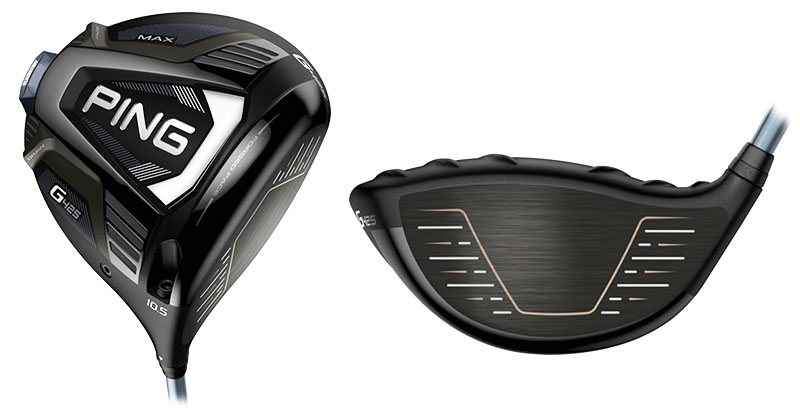

Loft Options: 9°, 10.5°, 12°
Launch: High
Spin: Mid
Adjustable Hosel: Yes
Pros:
- Stealthy looks!
- Stability is excellent even on off-center hits
- Ample Tungsten situated low and to the back of the driver
- Consistency is among the best for the drivers we demoed
- Super easy to replicate swing speed, ball speed, spin, and launch
Cons:
- Holy cow, it’s loud—avoid indoor range sessions!
- “Exotic” shaft options come at a premium
- Spin can dial up. Combined with a high launch, this could limit distance
My Experience (with pictures):
(our full length review of this club can be found here)
Yep, you knew this bad boy was going to be on the list. The Ping G425 MAX does a little bit of everything well and is a point-and-shoot guru.
As we noted in our PRIOR REVIEW of this beautiful head, the MAX places a premium on MOI and stability with 26 grams of tungsten located low and at the back of the head. This weight is moveable, to an extent, to promote or correct the shot shape of your choice.
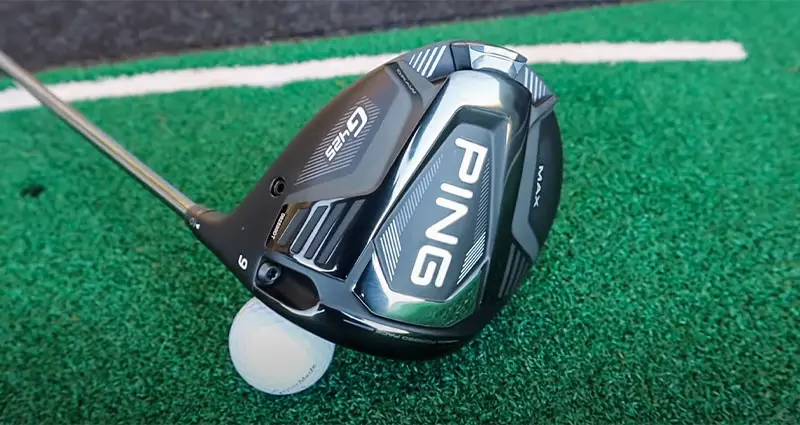

Ping continues to refine its proprietary “Dragonfly” webbing technology through the crown which strengthens the head and keeps it stable on impact.
Ping also continues to deploy the turbulator fins on top of the driver that help frame the ball for setup and cut through the air on your swing.
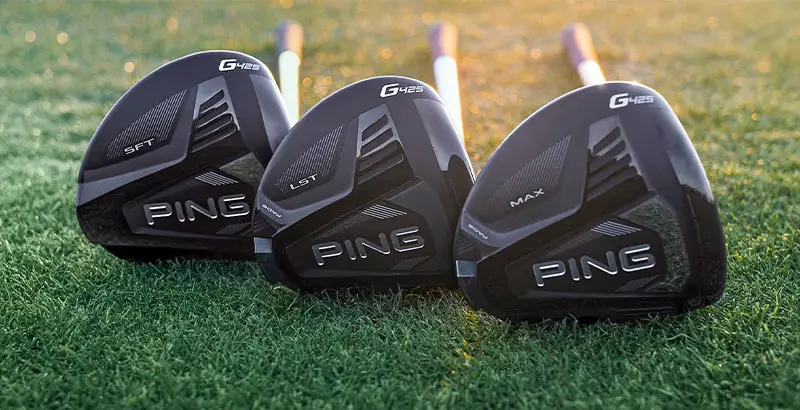

Consistency is the name of the game with this driver and while it won’t be the longest option available, it will likely be the easiest to dial in and maintain. Stability is top notch with this head and it’s a welcome update to Ping’s already legendary forgiving line.
The Bottom Line
I play with several sub-5 HCP golfers that swing the G400 line even today.
Why is that relevant? The G400 line was launched in 2004!!! That alone is a pure testament to just how good this driver series is year after year.
The G425 MAX carries that legacy and is the most forgiving driver I’ve hit yet.
Coupled with the LST (Low Spin) version, Ping wins the award for the best pick up, point, and swing options on the market. Truly, this driver fits in anyone’s hands, and whether you bag it comes down to looks, the sound, and the feel — which are all unique to Ping.
Along with the Callaway Rogue ST MAX, this is the first suggestion I make when asked for driver options.
#2. Callaway Rogue ST Max
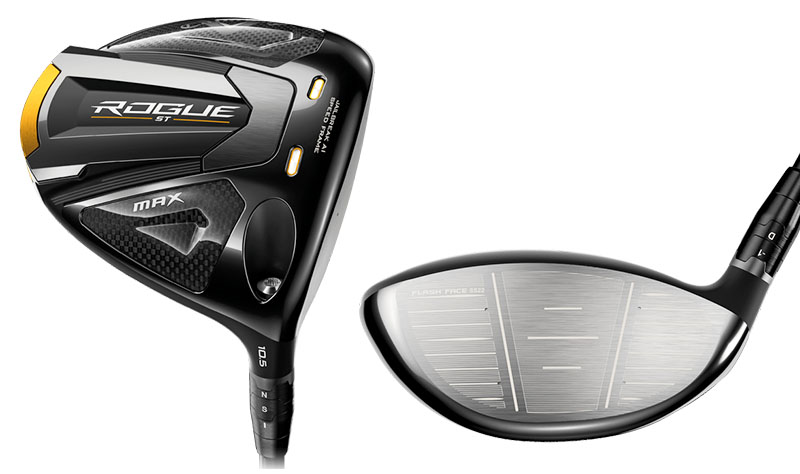

Loft Options: 9°, 10.5°, 12°
Launch: High
Spin: Mid
Adjustable Hosel: Yes
Pros:
- Forgiveness in spades!! ♠♠♠
- Solid feel and pleasant sound
- Consistent, repeatable results
- Absent any major swing quirks, it’s hard to miss your target
- Off center hits didn’t stray far offline, and maintained pretty good distance
Cons:
- On the expensive side of drivers
- Spin creep can be an issue (MAX LS nukes spin numbers)
- Faster swinging players may want to look at the LS option
My Experience (with pictures):
(full test results of the Callaway Rogue ST Max driver are in this post)
The Rogue ST line is by far one of the most accurate series of golf drivers I’ve had the luxury of reviewing. If you need lower spin or have a higher swing speed, the MAX LS is neck-and-neck with the MAX regular.
Callaway really dug deep and worked with their proprietary AI technology to tweak both the Jailbreak stabilization (two structural stabilization bars that sit behind the face of the club to frame the sweet spot) and the design of the flash face, to produce a consistently high ball speed off the face that feel solid on every stroke.
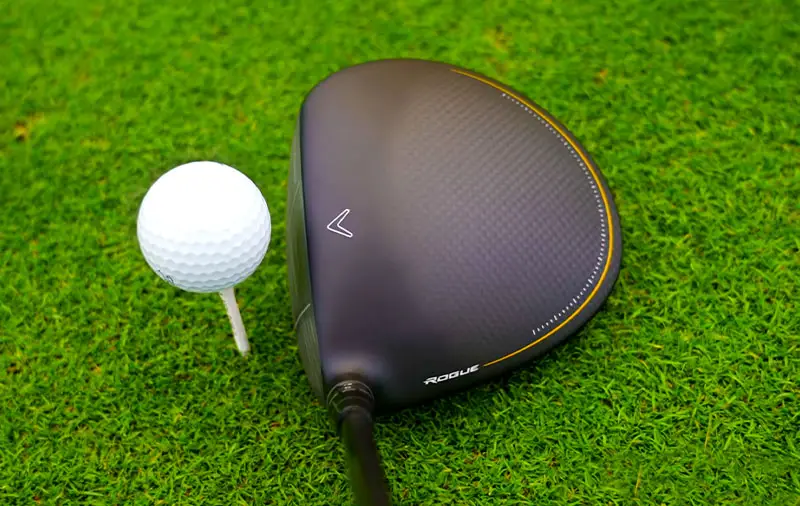

The club does everything well and inspires confidence in any swing. Callaway delved into the numbers to refine what was already an excellent driver platform, and make it supremely accessible to players of all ranges of handicaps.
In the MAX version specifically, Callaway employs a 26g tungsten weight positioned low at the back of the club (this is what makes it so forgiving!) for a high MOI design that works well with a unibody (single piece frame for those of us who cut through the fluff).
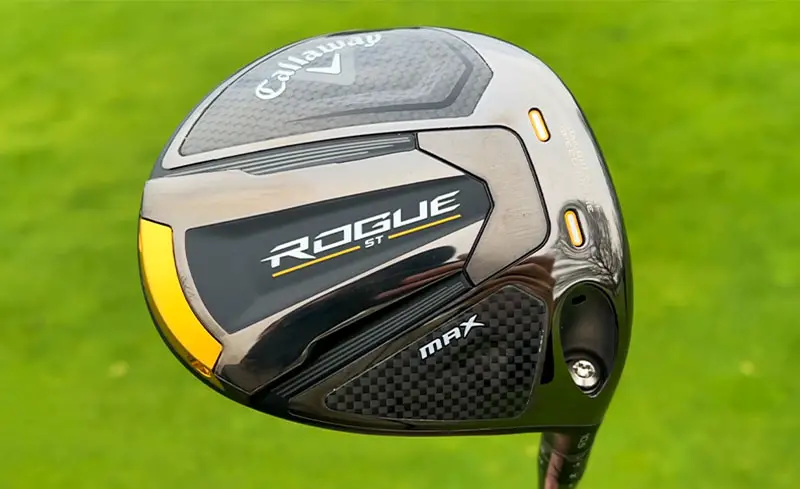

This all translates to keeping the club head steady upon deflection so that if you can replicate your swing, you’ll get the same, consistent results every time.
The Bottom Line
I love what Callaway did with both the Epic and Rogue ST line of drivers. The Epic MAX LS was one of my top 3 drivers reviewed last year, and the ST manages to refine an already excellent design.
The MAX is the go-to-every-day driver that I can comfortably recommend to any player as a starting point, and more often than not, ends up in their bag. It does everything well, looks good, and doesn’t disappoint. It’s easily one of the best drivers for forgiveness in 2023.
#3. TaylorMade Stealth Plus
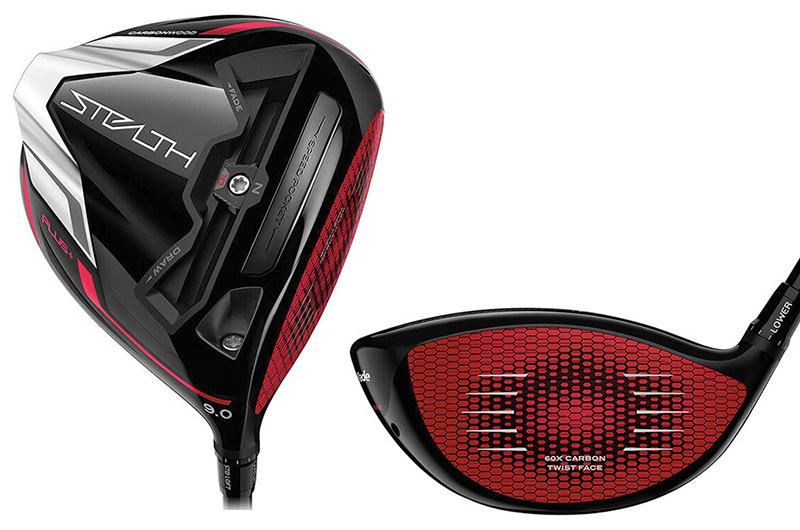

Loft Options: 8°, 9°, 10.5°
Launch: Mid
Spin: Low
Adjustable Hosel: Yes
Pros:
- It’s fast. Holy cow it’s fast. Ball Speed is EXCELLENT
- Feel and sound are unique, but very satisfying
- Large face despite a normal sized head inspires confidence.
Cons:
- LOUD colors are not for everyone
- Yikes, it’s expensive ($599)
- “Fliers”—sometimes the face can get too hot (irony at its finest). If you’re looking to play a specific number to avoid hazards, you may want to use your 3W
My Experience (with pictures):
(our full review with test results of this club can be found over here)
Distance, Distance, Distance… did I Mention Distance?
The Stealth Plus+ is considered the low spin version of the Stealth family, but don’t let that dissuade you from this club.
Technically the Stealth (non +) version of this driver is marketed as the most forgiving driver of the family, but with mid-high swing speeds, the Plus takes the cake in my opinion.
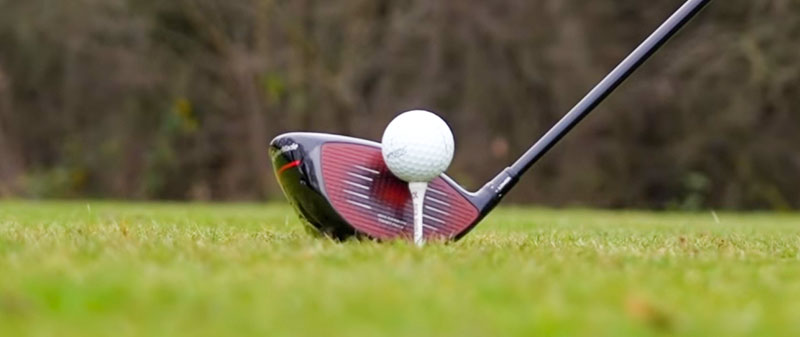

The pink (red?) elephant in the room is TaylorMade’s new 60x carbonwood face. For the layman, this represents a 40% weight reduction over the equivalent in pure titanium.TM has also designed the Stealth face to be 20% larger than its predecessor offering more real-estate to propel the ball forward. This ultimately translates to a bigger sweet spot and faster ball speed across the board. We tend to agree.
In particular, the Stealth Plus produced the fastest ball speed off the face, and some of the longest total carries of our testing.
For this reason alone, the Stealth Plus edges out the Stealth (non plus) as our selection for the most forgiving driver of the TaylorMade family. Your ball is primed to go far whether it’s on carry, or by roll-out.
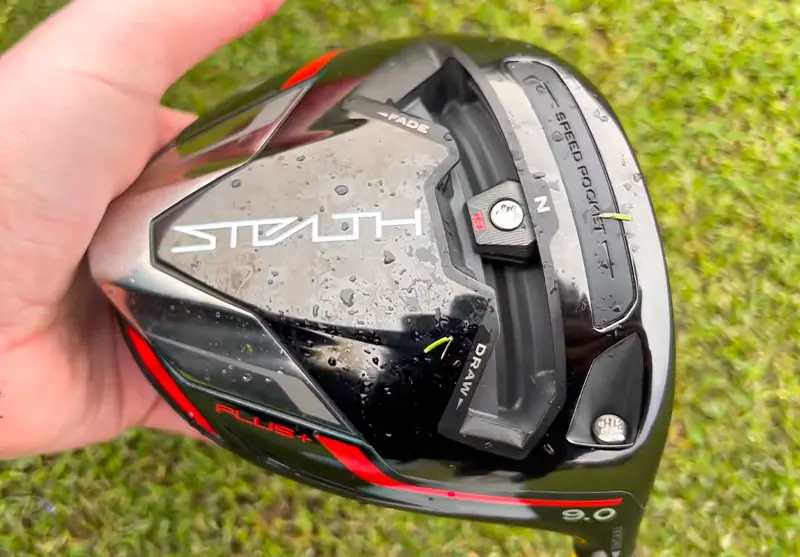

TaylorMade calls their new line the “stealth”, but there’s nothing subtle about this driver.
The Bottom Line
Carbonwood is not a new concept, but in this case TM did an excellent job re-inventing the wheel and offering players something outside the box.
The Stealth drivers as a family are fast off the face and are designed for distance despite their inconspicuous name.
In this case, the combination of low spin and fast ball speed produces a driver that will result in favorable numbers in most players’ hands. This driver will cater to players that are looking to go big off the tee and extend their reach with some extra carry and roll-out.
#4. Mizuno ST-Z 220
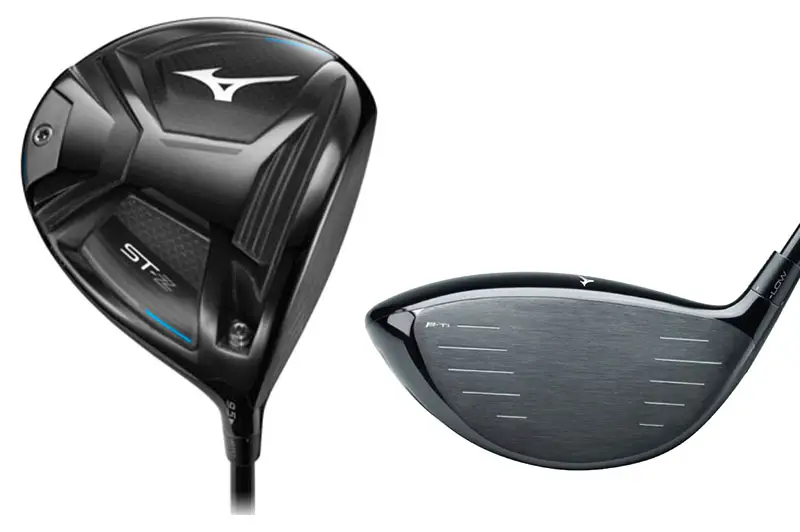

Loft Options: 9.5°, 10.5°
Launch: Mid to High
Spin: Mid
Adjustable Hosel: Yes
Pros:
- One of the best drivers I’ve hit for consistency on high/low misses
- I love the black and blue aesthetic
- Controllable spin — this is not a low-spin version to eke out distance
- Very predictable and consistent face
- Longevity
Cons:
- Not the best driver for slower swing speeds
- Not as distance friendly
My Experience (with pictures):
Stability is the name of the game with the latest edition of this Mizuno driver, but it doesn’t place the focus in the most conventional way…
Mizuno starts with a premium material “Beta Titanium CoreTech face” that promotes strength and flexibility in the face allowing for faster ball speed and longevity over time.
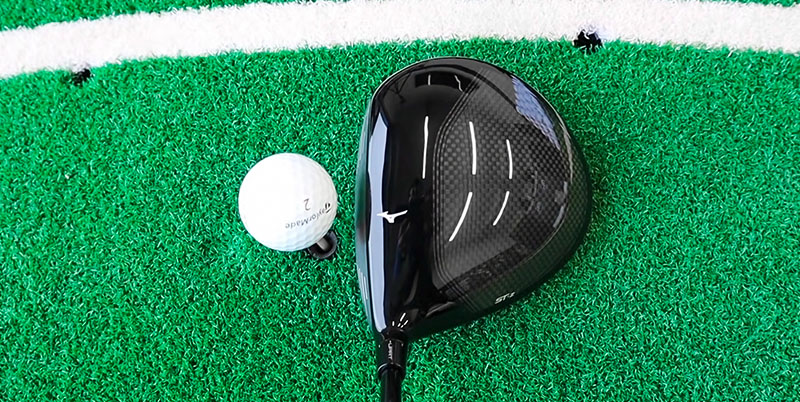

This driver is designed to be used, abused, and practiced with… while producing consistent results through the years. You’ll be hard-pressed to find a driver that feels “hit out” even 5 years down the road.
Mizuno went out of their way to redesign the term “stability” with a focus on the horizontal plane from crown-to-heel instead of hosel-to-toe.
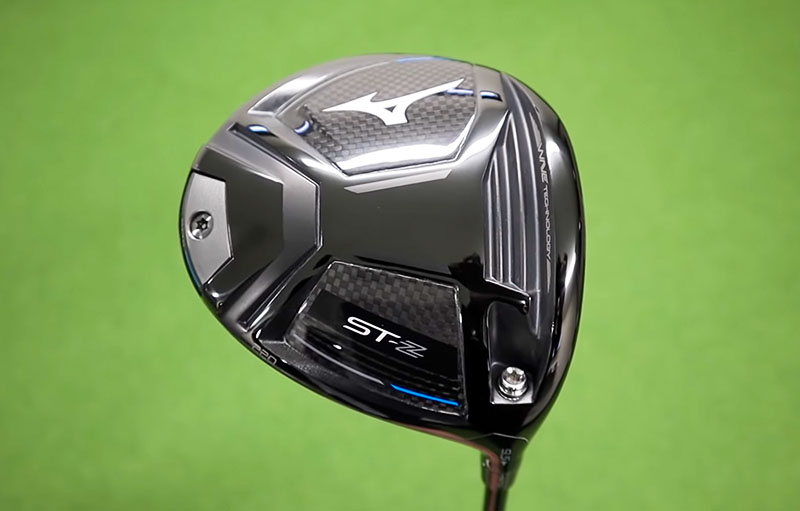

Instead of shaving weight off the top of the club like many other manufacturers, Mizuno engineers took an opposite approach and thinned out the sole with 40% more carbon fiber allowing weight to be positioned low and back.
Overall this driver promotes a sleek and understated look with a slight pear aesthetic. We found it to be wonderfully stable and very easy to hit the fairway for players that are a bit more advanced and routinely pull out their driver to shoot the distance off the tee.
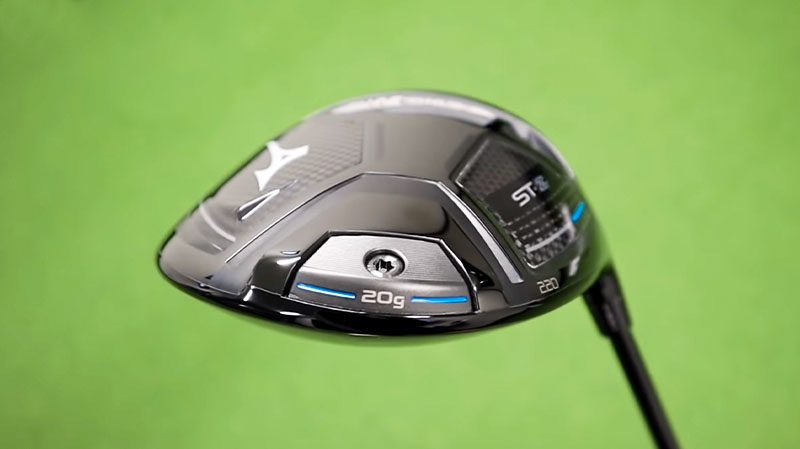

The Bottom Line
This driver is one of the most friendly vertical-axis-miss drivers I’ve played and it shows up when you try to elevate the ball for extra launch. It fits perfectly on our list of most forgiving drivers.
Mizuno makes a product that appeals to a player that has developed their swing and isn’t afraid to go after it when the situation calls for it. It won’t be the longest driver on the rack, especially since the stock length is 45”, but it will serve you well for a long time.
#5. TourEdge C722
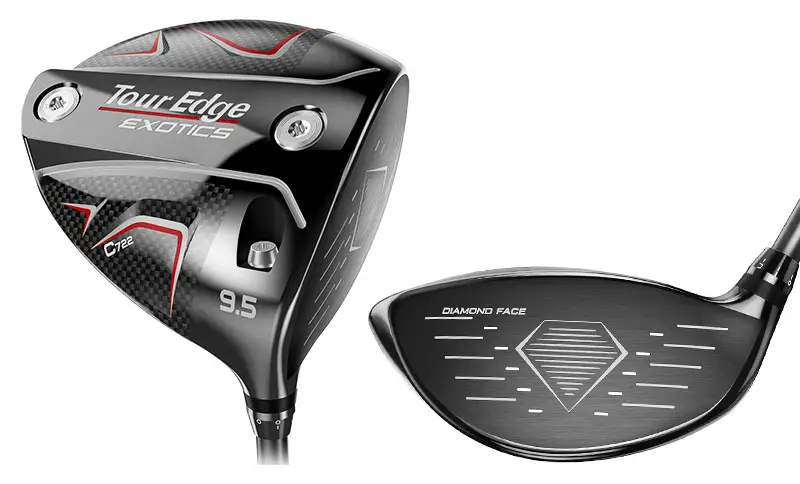

Loft Options: 9.5°, 10.5°
Launch: High
Spin: Low
Adjustable Hosel: Yes
Pros:
- Price point!
- Stock shaft options are curated and excellent
- Smallest head size of 2023 without being a “Pro” model!
- Lower spin driver with the forgiveness and launch of a “Max” head
Cons:
- Smaller head may be intimidating for some
- Slower swingers can opt for the E722 though
- A decent club head speed is necessary to benefit from the technology (95+mph)
- Brand recognition — people haven’t figured out that TE metal woods are elite (yet)
My Experience (with pictures):
Carbon fiber, high center of gravity placement, moveable weights, and a diamond face? All at a price that won’t break the bank? Yes please!
The Tour Edge C722 is in my top 3 favorite drivers this year for both the ease of use, and the price.
I was a big fan of the C721 series as a natural low-spin driver, and the C722 carries the day with a 20% thinner Ridgeback Spine (center crown support) than its predecessor, with the same or better stability.
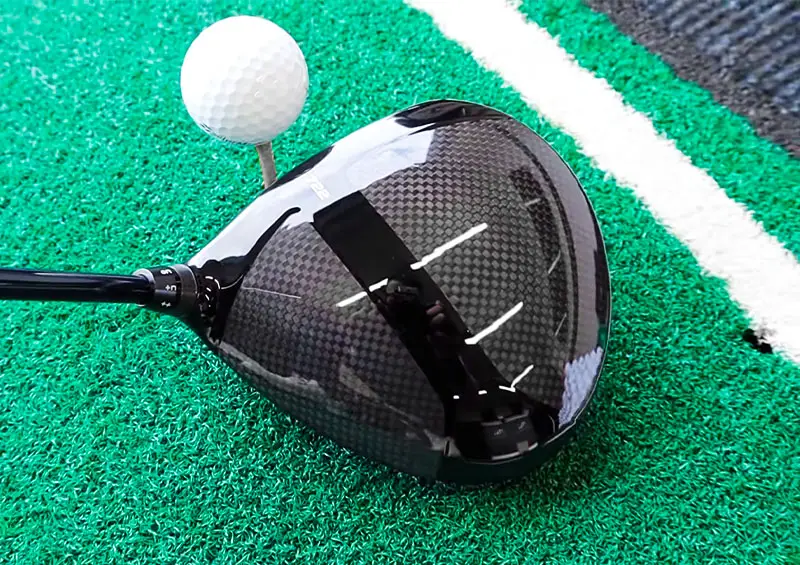

The Carbon wrap technology in the head/crown of the driver adds 26% more carbon fiber to promote flex from the C721 and to reduce weight even further. This allows the driver head to be faster, flex more for high ball speed, and launch higher.
The C-series specifically is an eye-opener and earns a spot in our most forgiving drivers because it is the smallest volume driver head on the list at 445cc and still produces numbers akin to a 460cc driver. That’s truly impressive.
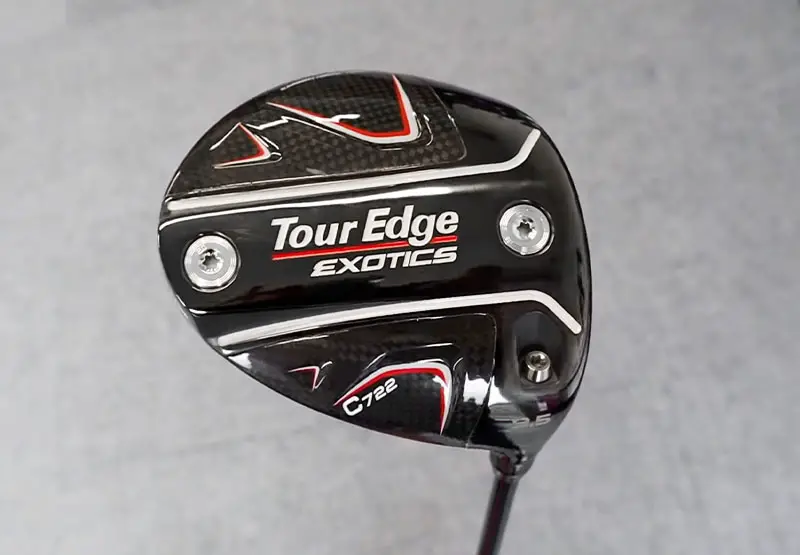

Paired with premium shaft options, you can’t go wrong. I specifically chose the C-series driver instead of the E-series because of spin characteristics.
In my testing, I found the E722 to have anywhere from 350-500 rpm’s more backspin than the C722. While that is ideal for those that are seeking a fairway finder and can shape shots, players that are prone to aggressive shot shapes (slices) may not appreciate the extra spin in the E model.
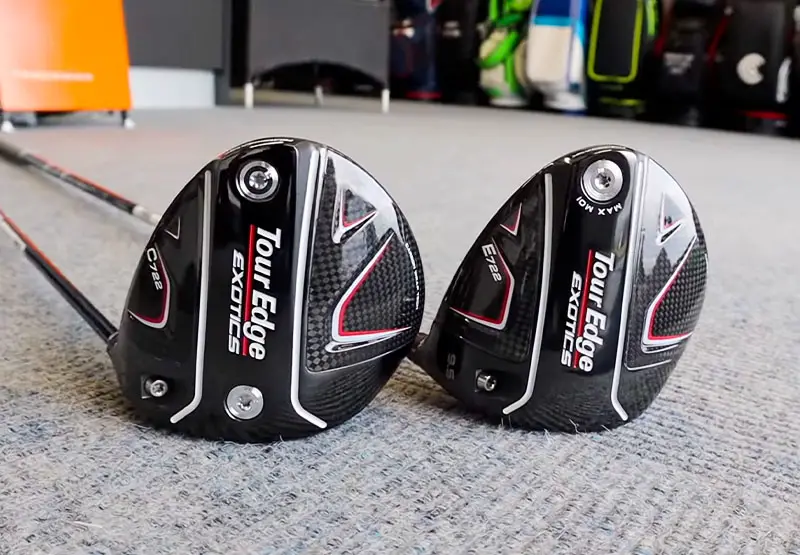

The Bottom Line
This is a premium driver with top-of-the-line components.
At $429.99 brand new, there is no better value/performance driver on the market. Period!
The driver looks good, feels good, and sounds good, so long as you can get past the fact that it doesn’t have a big-box name stamped on it.
Anyone looking for a naturally lower-spin driver, or a more compact head should give one a rip. Let’s keep this secret between us so that TE doesn’t blow up and hike the price tag!!!
And the Winner for the Most Forgiving Driver is…
You were expecting to see the “MAX” version of every manufacturer on this list, weren’t you? Are you surprised? Does this inspire you to reach outside your comfort zone? We hope so!
We’ve hit a ton of shots, switched shafts, balls, players, and conditions to try to bring you a spread of the most forgiving golf drivers from both our personal experience, as well as the fitting experiences of the players we work with.
The “MAX” version doesn’t always fit the bill. In this case, there are several drivers on our list that are “designed” one way but fill multiple roles.
When you take all things considered — ball speed, carry, launch, and spin, this is what we came up with!


Best Forgiving Driver
Ping G425 MAX/ LST – If you don’t mind the sound and feel of the driver, the G425 line is by far one of the best pick-up-and-play drivers out there.
It may not be the longest, but it’s so easy to hit and score with for the full range of handicaps. It’s easily the most forgiving driver I’ve ever hit.
I’ve added the LST in the mix because it cuts the spin down for those that swing fast while still offering supreme playability. The LST is still one of the best drivers for forgiveness.
Best Driver for Forgiveness – Runner Up
Callaway Rogue ST Max – If Ping is the champ, the Callaway Rogue ST line is its kissing cousin (Sorry West Virginia!). For those that don’t like the proprietary sound and feel of the G425 line, the Rogue ST is your weapon of choice.
Boasting more traditional looks and feel, the Rogue ST Max is the most accurate driver I’ve hit of the new releases!
The club is stable, it’s easy to swing, and the numbers produced are very repeatable. Last year the Epic MAX was in the running for my top three — this year, it’s hard to pick just one head from the Callaway line. Definitely one of the best best driver for forgiveness.
Best Value Pick
Tour Edge C722 – I can’t wait to do a full review for readers of this driver (It’s coming, I promise). This is a premium head that offers the most recent technology at more than $100 less than some of the other drivers on this list.
Once you get past the name, this driver will not disappoint. Buy one, then buy a nice shiny wedge with your savings since you’ll be in position to pitch and putt!


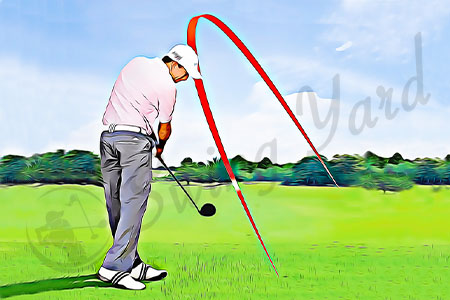

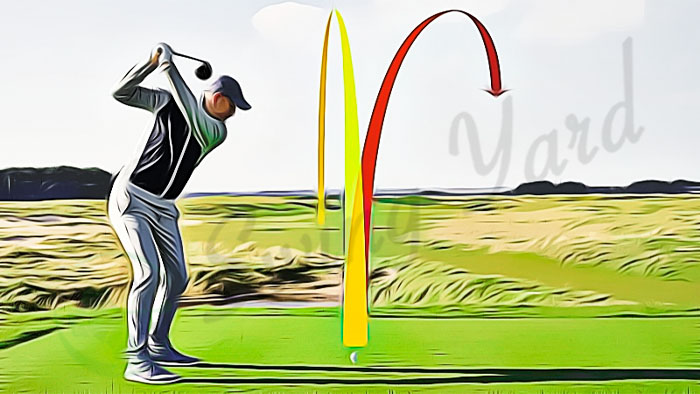
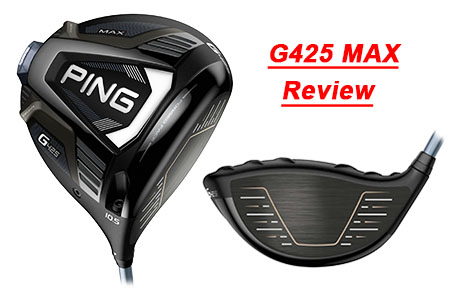
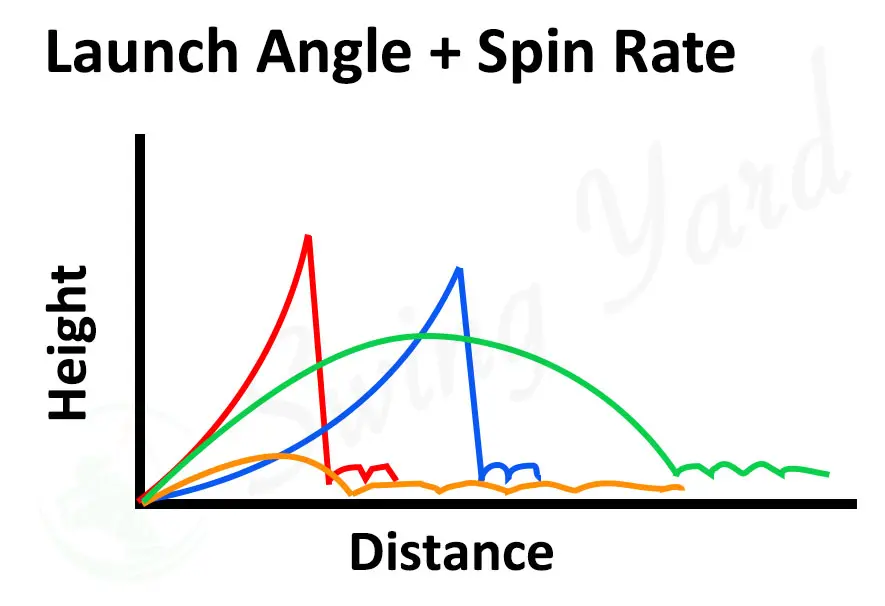


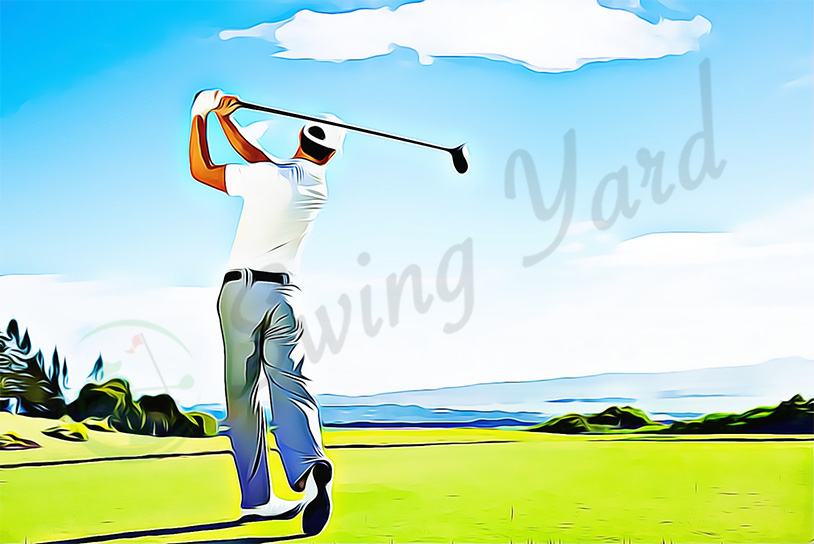
I am a high handicapper 15-20 handicap off the front tees and I am working on curing my driver slice. I currently slice the driver most of the time and lose yardage. I just bought a used Ping G410 max from a golf store and I have 30 days to keep it or return it and get credit towards something else. Putting aside my slice should I return it for credit and wait for the G425 max to drop in price?
Dale, the G410 is a decent driver from a few years ago. I think you’re fine starting off with that for a while, at least until you fix your slice. If you really want something newer, then yeah go for the G425… I LOVE mine. I curious though, what exactly are you doing to fix your slice?
Around 110-115 SS. Ping LST or Max?? Miss is typically over cooked draw.
If you’re legit swinging that fast, the LST will be your best option. You’ll probably create too much spin with the Max. BUT, this is ONLY if you can control your shapes… the LST is less forgiving than the MAX. If you’re not controlling your shots that well, you could simply swing slower to gain control, but then I’d recommend the MAX in that case for sure.